HFBK Hamburg's Public Feed: Willkommen zu meiner Debattenr...
Willkommen zu meiner Debattenrundschau vom 06.05.2019!
Im November vergangenen Jahres eröffnete das MMK in Frankfurt eine große Retrospektive der Künstlerin Cady Noland. Die von Susanne Pfeffer organisierte Ausstellung wurde von vielen als Sensation gefeiert, hatte Noland sich doch vor knapp zwanzig Jahren aus der Kunstwelt zurückgezogen, nach dem sie bis dahin großen institutionellen und kommerziellen Erfolge verzeichnen konnte. Die Show wurde in der Presse fast schon überschwänglich gefeiert. Ein Beispiel liefert Niklas Maak mit seiner Besprechung für die FAZ. Nolands Arbeit, welche sich vor allem mit den eher finsteren Seiten der amerikanischen Gesellschaft beschäftigt, sei ein wahrer Augenöffner: “Es ist selten so, dass man ein ganzes Land, einen Moment der Gegenwart besser versteht, wenn man ins Museum geht. Hier ist es der Fall.”
Hans-Jürgen Haffner attestiert der Ausstellung in seiner Besprechung für das Magazin Springerin eine starke ästhetische Wirkung, welche vor allem auf die Großzügigkeit der Präsentation zurückzuführen sei. “Andererseits wird der architektonische Ort samt seiner institutionellen Funktion einer temporären Ausstellung untergeordnet, der kuratorischen Setzung dienstbar gemacht – mit regelrecht radikalem Effekt. Konkret bedeutet das nämlich, dass für Pfeffers Frankfurter Debüt die Sammlung ins Depot verfrachtet werden musste – bis auf einige handverlesene, dafür aber geradezu aufreizend kokett in den von Noland dominierten Parcours eingestreute Stücke”, so Haffner. Werkinformationen in der Ausstellung selbst seien optisch so minimal wie möglich gehalten worden, um den ästhetischen Gesamteindruck nicht zu beeinträchtigen. Zu den Arbeiten, welche nicht zu Nolands Oeuvre gehörten, seien keinerlei Informationen verfügbar; die kuratorischen Entscheidungen blieben für den/die Betrachter/in intransparent. Haffner thematisiert nicht nur jene Fragen, welche Pfeffers Ausstellungskonzeption offen lassen, sondern liefert auch eine sorgfältige Analyse von Cady Nolands Werk mit all seinen Stärken und Schwächen – sehr empfehlenswert.
Kunstinstitutionen geraten immer häufiger öffentlich in die Kritik, wenn sich deren Repräsentanten, Akteure oder Unterstützer moralische oder ethische Fehltritte erlauben. Anlässlich der Bekanntgabe der Nominierungen für den diesjährigen Turner-Preis kam es zu Kritik an den ausrichtenden Institutionen – die Muttergesellschaft der Firma Stagecoach South East, welche zum Sponsoren-Pool gehört, werde von Brian Souter geführt, welcher sich in der Vergangenheit für Kampagnen engagiert habe, die gegen die Rechte Homosexueller gerichtet waren. Inzwischen sei die Zusammenarbeit einvernehmlich beendet worden, wie unter anderem Chris Sharratt in seinem Kommentar für Frieze berichtet. Er stellt außerdem kurz die Arbeit der nominierten KünstlerInnen Lawrence Abu Hamdan, Helen Cammock, Oscar Murillo und Tai Shani Nominated vor.
Immer noch ungelöst ist der Konflikt um den Vizepräsidenten des Aufsichtsrats des Whitney Museums in New York, Warren Kanders. Kanders ist Eigentümer einer Firma, welche Kampfmittel herstellt; seit Wochen fordern verschiedene Interessensgruppen seinen Rücktritt. Inzwischen hätten fast 50 der 75 an der kommenden Whitney-Biennale beteiligten Künstlerinnen und Künstler einen offenen Brief unterzeichnet, in welchem die Absetzung Kanders gefordert werde. Das berichtet Jasmine Weber in ihrem Artikel für Hyperallergic.com. Aus dem Brief, den viele weitere prominente Akteure aus dem Kunstbereich unterschrieben hätten, zitiert sie folgende Passagen: “‘Universities and cultural institutions like the Whitney claim to be devoted to ideals of education, creativity, and dissent beyond the dictates of the market,’ the letter states. ‘Yet, these institutions have been historically entwined with the power structures of settler colonialism, white supremacy, heteropatriarchy, and capitalism.’ Those institutions, the letter continues, ‘provide cover for the likes of Kanders as they profit from war, state violence, displacement, land theft, mass incarceration, and climate disaster.’ It explains: ‘Saying ‘no’ to Kanders opens a positive opportunity to begin a deep, and long-overdue conversation about artwashing, the role of private funding in the cultural sphere, and the accountability of institutions to the communities they claim to serve.’”
Das institutionelle und kommerzielle Interesse an schwarzen bzw. nicht-weißen KünstlerInnen hat in den vergangenen Jahren immer weiter zugenommen. Dass damit ein gehöriger Druck einhergehen könne, welcher für schwarze KünstlerInnen noch vielschichtiger sei als für ihre weißen KollegInnen, beschreibt Melissa Smith in ihrem Artikel für news.artnet.com : “The nearly dozen black artists I spoke to for this article say that while the industry’s gatekeepers are now paying attention to black culture, establishing strong relationships with them is still disproportionately harder for all artists of color than for their white peers. And if black artists have nabbed a spot, they’ve done it by serving as their own advocates, translators, and promoters in a system not designed to fully understand—or accommodate—blackness.”
Das Gallery Weekend in Berlin eröffnete vor knapp zehn Tagen. Eine anonyme Aktivistengruppe kritisierte unter dem Motto “Wie viel Weisswurst geht noch?” die Dominanz weißer männlicher Künstler im Ausstellungsprogramm des Gallery Weekends. “[A]ccording to a group of arts activists, 75% of the artists being platformed at Berlin Gallery Weekend are white and male”, schreibt Dorian Batycka in ihrem Artikel für Hyperallergic.com.
Parallel zum offiziellen Programm fanden zahlreiche weitere Kunstveranstaltungen statt. Eine davon hieß ‘THE show’ – eine selbstorganisierte, dreitägige Gruppenausstellung, welche Kuratorin Helene Bosecker organisierte. Marieke Fischer hat für das i-D Magazine ein Interview mit ihr und zwei Künstlern der Ausstellung geführt. Themen sind die eigene Professionalisierung, Berlin als Kunststadt und Rebellion gegen bestehende Strukturen des Kunstbetriebs. In der Anmoderation heißt es: “Mit der Ausstellung, die parallel zum Gallery Weekend stattfindet, zeigen sie dem etablierten Kunstmarkt elegant den Mittelfinger. Sie suchen nach Lösungsansätzen für einen Wandel in der Szene. ‘Im Rahmen dieses Projekts konnte ich beobachten, dass man den Ellenbogen einfährt und Erarbeitetes teilt’, sagt Helene Bosecker. ‘Damit sind die Künstler*innen erheblich viel weiter in ihrem Denken, als die Galerieszene und autonomisieren sich durch Engagement sowie Enthusiasmus kontinuierlich.’” Insgesamt ein lesenswertes und unterhaltsames Interview, in dem künstlerischer Idealismus in seiner gesamten Bandbreite – von persönlicher Motivation bis hin zur Selbstausbeutung – erfahrbar wird. Hier noch zwei schöne Zitate: “Kennet [Künstler]: Eine gute Arbeitsmoral ist wichtig. Es ist ziemlich ‘millennial’, alles mal auszuprobieren und es beim kleinsten Hindernis wieder wegzuwerfen – nur um dann etwas Neues zu testen. Manche sagen, der ‘Erfolg über Nacht’ kommt nach vielen Jahren harter Arbeit hinter den Kulissen. So abgedroschen das auch klingen mag – ich glaube, dass es wahr ist. Seitdem ich in Berlin bin, bin ich permanent pleite. Aber auf eine Art, die mich dazu motiviert, härter zu arbeiten und kreative Lösungen zu finden, um Kunst zu machen.” […] “Helene [Kuratorin]: […] Die Schnelllebigkeit medialer Eindrücke, das seltsame Gefühl abgelenkt zu sein und am Ende doch unbefriedigt zu bleiben, darauf kann Kunst reagieren. Die Qualität des Austausches ist hier inhaltlich und ästhetisch auf diversen Ebenen angesiedelt. Die Auseinandersetzung mit den eigenen ästhetischen Vorstellungen, eine bewusste Betrachtung von Kunst und das Innehalten zum Denken wird wieder mehr Einzug in den Alltag der Menschen finden. Ich glaube fest daran, dass sich die müden, rechteckigen Augen nach dieser visuellen und inhaltlichen Qualität sehnen. Ich weiß nicht, wie lange der Prozess brauchen wird, doch das Bedürfnis ist generationsübergreifend vorhanden.”
In knapp einer Woche eröffnet die Biennale in Venedig, auf der Natascha Süder Happelmann a.k.a.
Natascha Sadr Haghighian den deutschen Pavillon bespielen wird. Wer einen kompakten Einblick in das künstlerische Vorspiel der Biennale-Präsentation erhalten möchte, welches aus Videoaufnahmen und performativen Auftritten besteht, dem sei Tobias Timms Artikel für Zeit Online ans Herz gelegt.
Ben Mauk gibt in seinem Artikel für Frieze einen Einblick in die von Nationalismen geprägte Geschichte der Biennale von Venedig und sieht dabei in Happelmanns künstlerischem Ansatz ein begrüßenswertes Gegenprogramm.
Schrift begegnet uns permanent im Alltag (und auch sonst ständig), warum sie so aussieht wie sie aussieht dürfte den meisten Menschen allerdings eher unbekannt sein. Eine schöne Einführung in die Typografie bietet ein Interview mit den beiden Gestaltern Hendrik Weber und Alexander Roth, welches Christoph Rauscher und Rabea Weihser für Zeit Online geführt haben. Anlass ist deren Neuinterpretation der Schriftart Helvetica, welche sich weltweit großer Beliebtheit erfreut, welche aber an die Erfordernisse des digitalen Zeitalters angepasst werden musste.
Wolfgang Ullrich kritisiert in seinem Kommentar für die Süddeutsche Zeitung die Fundraising-Strategien von Künstlerinnen und Künstlern, welche sich für den Umweltschutz engagierten. Statt sich Methoden zu bedienen, die strukturell denen großer Konzerne ähneln würden, könnten KünstlerInnen “neue, klügere Formen von Symbolpolitik entwickeln”, so Ullrich. Die Realität sähe allerdings anders aus: “Vielmehr vertrauen Künstler jetzt ganz auf Mechanismen, die auch sonst in der Konsumwelt gut eingespielt sind: Sie produzieren Dinge, um Wirtschaftskreisläufe zu etablieren, mit denen sich eines Tages ökologischer produzieren lässt. Diese Kunst funktioniert also nur innerhalb der etablierten Ökonomie - und geht zumeist bis zur Unkenntlichkeit in ihr auf.”
In fast allen Bereichen der Hochkultur gibt es sie, nur in der Bildenden Kunst ist sei äußerst selten zu finden – die explizit negative Kritik, den Verriss. In der Literatur wird ganz selbstverständlich harsch geurteilt, in der Filmkritik ebenfalls; im Theater sind sogar Buh-Rufe ein etabliertes Instrument, mit dem das Publikum seinen Unmut zum Ausdruck bringen kann. Christian Saehrendt beschreibt in seinem Plädoyer für den Verriss in der Bildenden Kunst, welchen die NZZ veröffentlichte, die Ausgangslage folgendermaßen: “Die Kunstszene erscheint wie eine weitläufige, komplex institutionalisierte Fankultur, wie ein Cluster von kleineren oder grösseren Begeisterungsgemeinschaften für bestimmte Künstler, Kunstrichtungen und kuratorische Konzepte.” Möglicherweise sei das Überangebot an Kunst und die begrenzte Aufnahmefähigkeit des Publikums der Grund – schlechte Kunst würde einfach unter den Tisch fallen, so Saehrendt; eine Auseinandersetzung mit ihr sei schlicht unnötig angesichts der Fülle des aufregenden Angebots. Ein weitere Grund, so vermutet der Autor, könnte in der “grossen Verunsicherung über den wahren Wert der Gegenwartskunst” liegen. Die Bedeutung zeitgenössischer Kunst sei immer fragil. Vielleicht fürchte man sich davor, dass das “Vertrauen in das symbolische Kapital Kunst, in die Währung Kunst insgesamt erschüttert” werden könnte. Außerdem im Verdacht des Autors: “der allgegenwärtige Narzissmus”. Nicht alle Argumente Saehrendts scheinen gleich stichhaltig, als Denkanstoß funktioniert sein Artikel dennoch.
Bob Ross gelangte mit seiner Fernsehsendung „The Joy of Painting“, welche Mitte der 80er bis Mitte der 90er Jahre ausgestrahlt wurde, zu einiger Berühmtheit. Darin erklärte er einfache Maltechniken, mit denen jeder zum Landschaftsmaler werden konnte. Eine Ausstellung im DePaul Art Museum in Chicago versucht sich jetzt an einer Neukontextualisierung Ross’. In Jason Foumbergs Artikel für theartnewspaper.com beschreibt Kuratorin Rodrigues Widholm ihren Ansatz. Foumberg selbst sieht in Ross’ Praxis vor allem einen wichtigen Anknüpfungspunkt zur Gegenwartskunst: “As a US Air Force veteran who painted ‘happy little clouds’ and offered inspirational on-air advice while he worked, Ross represents a shift in post-war art away from suffering and trauma, away from irony and academicism, toward optimism, fantasy, community healing and teaching. It turns out Ross is right in line with contemporary art movements.”
- Johannes Bendzulla

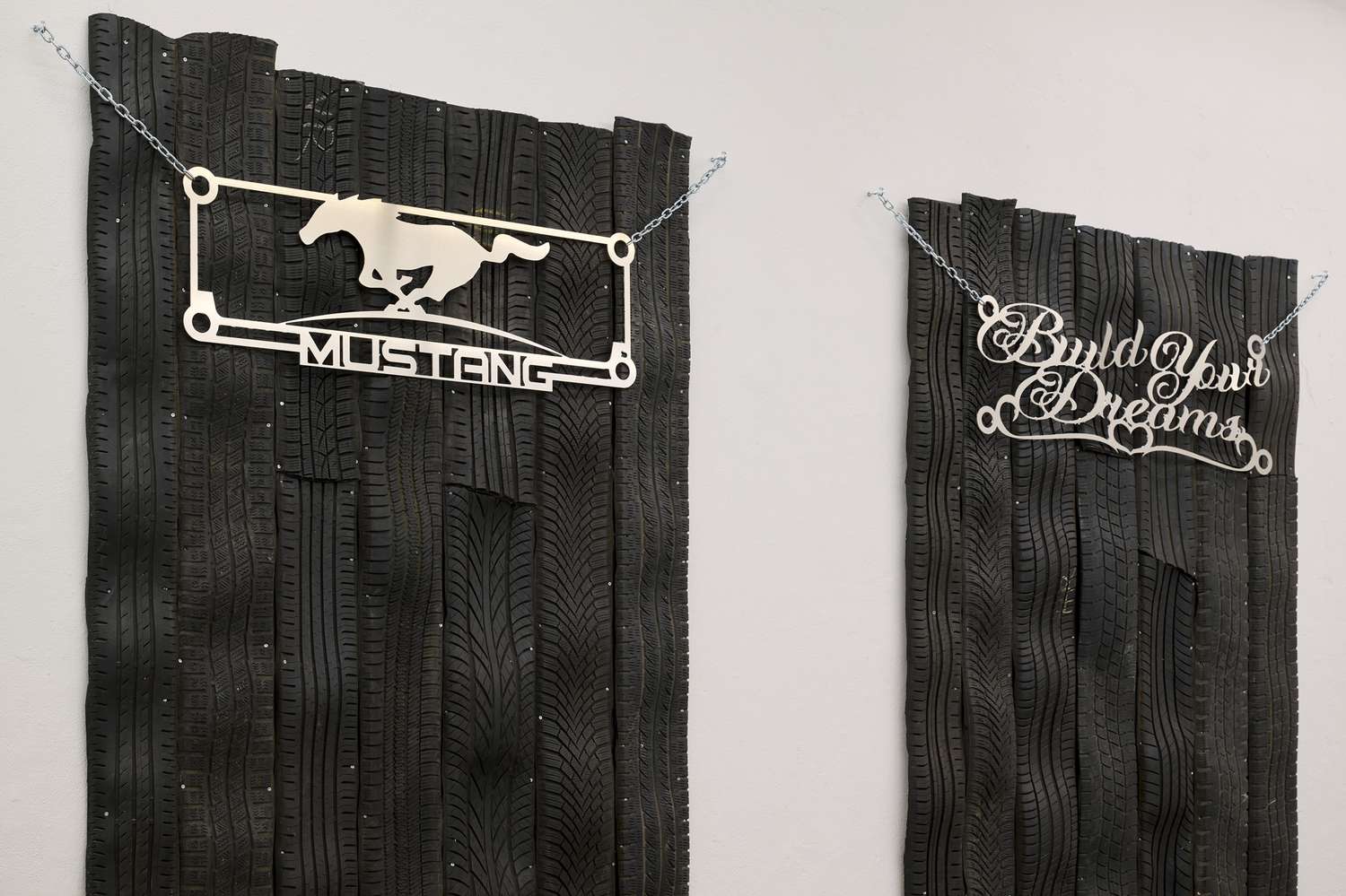
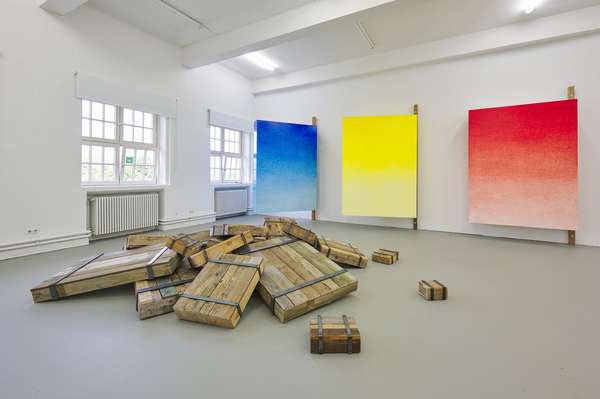
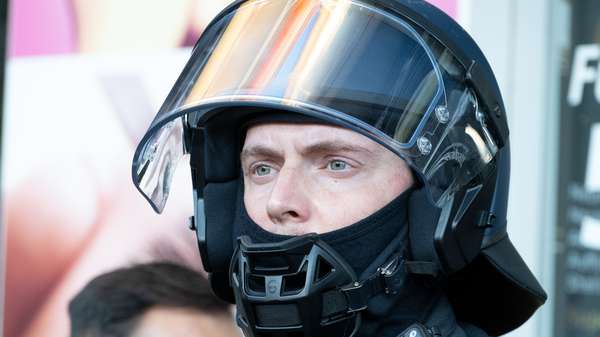
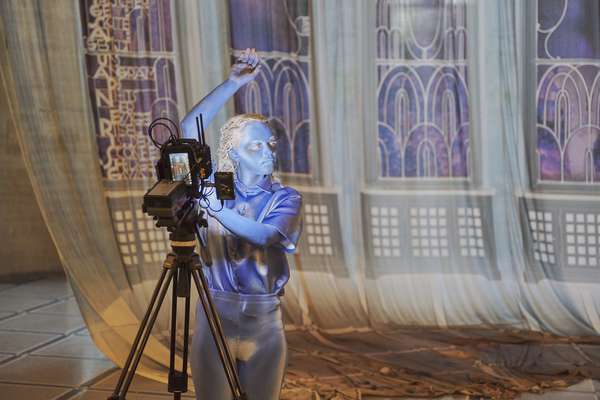
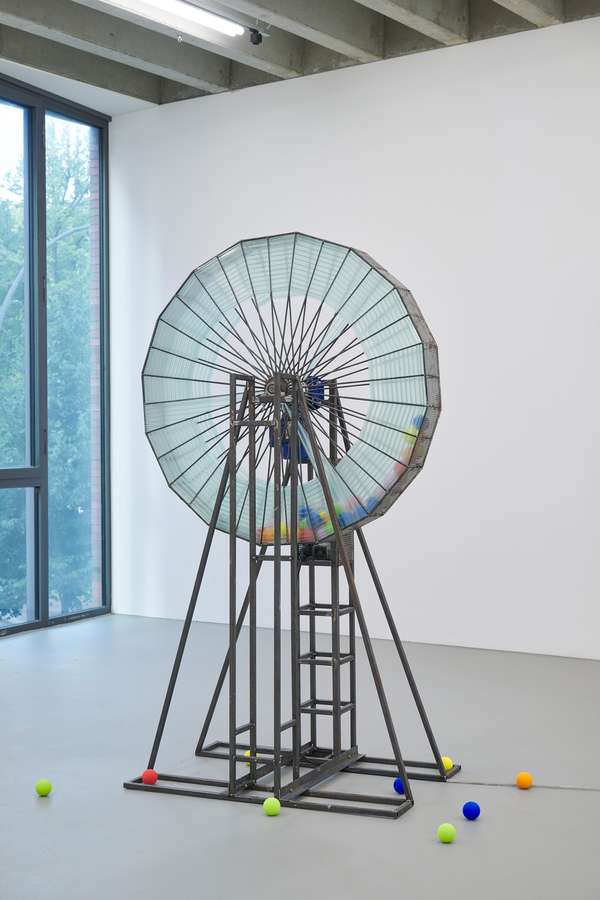
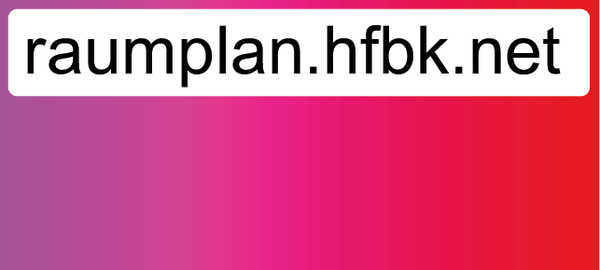
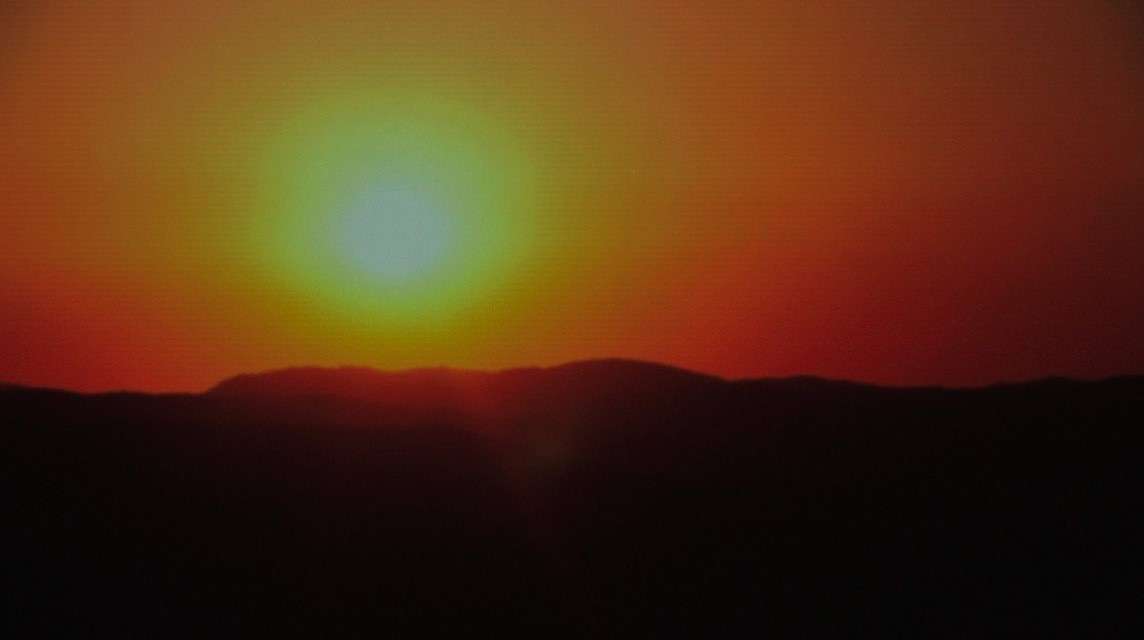
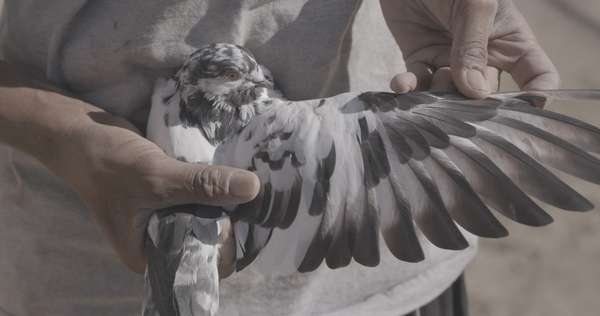
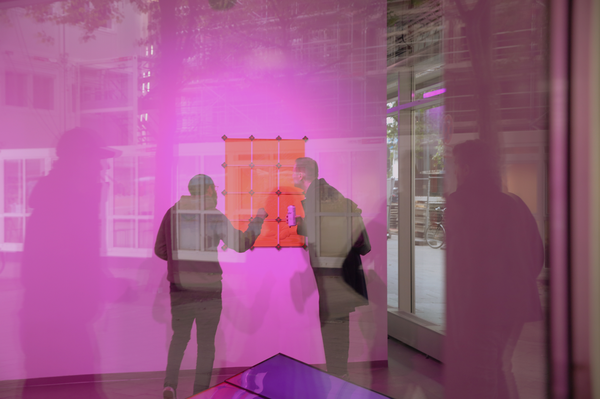
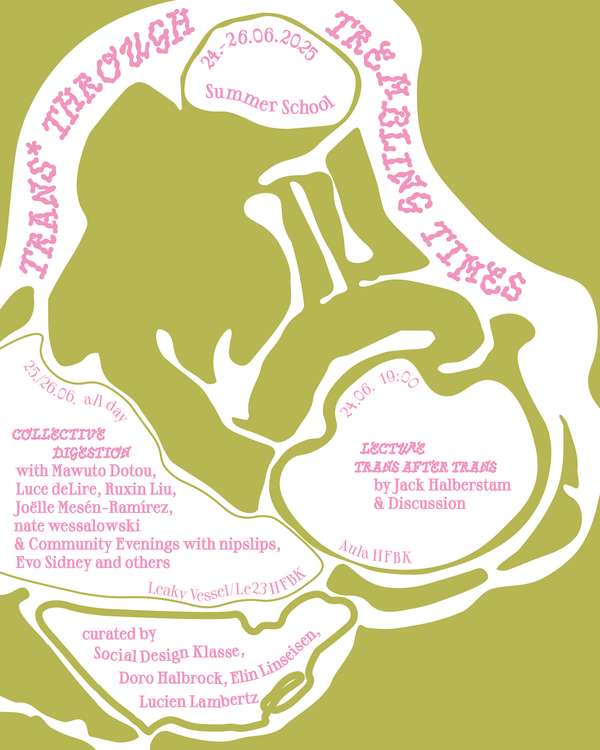
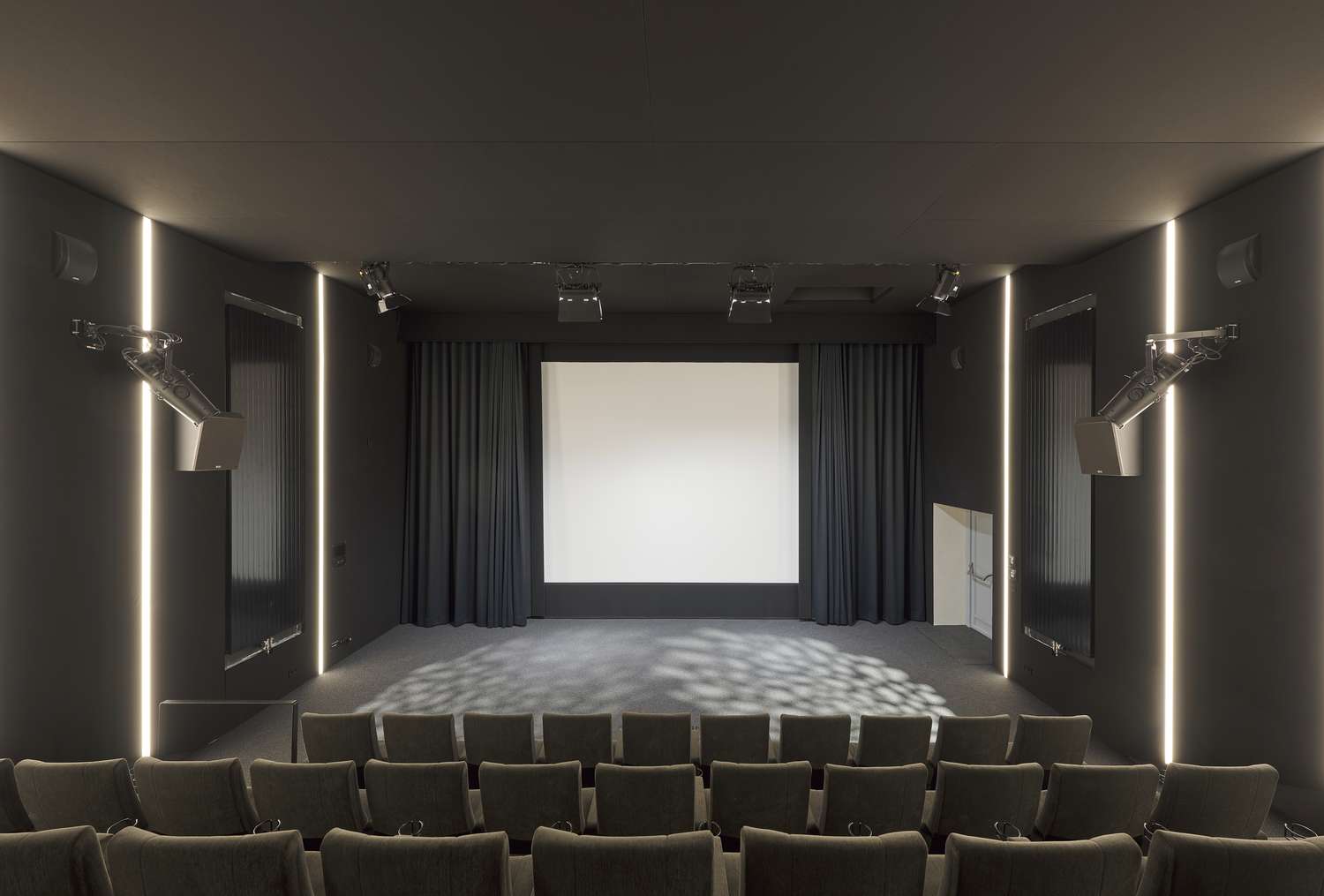
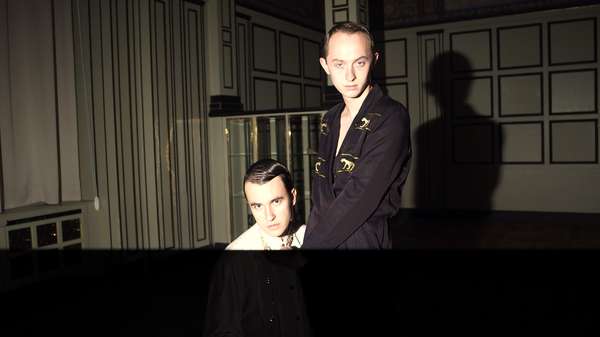
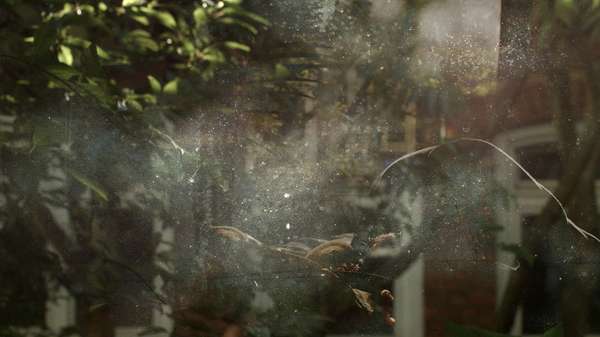
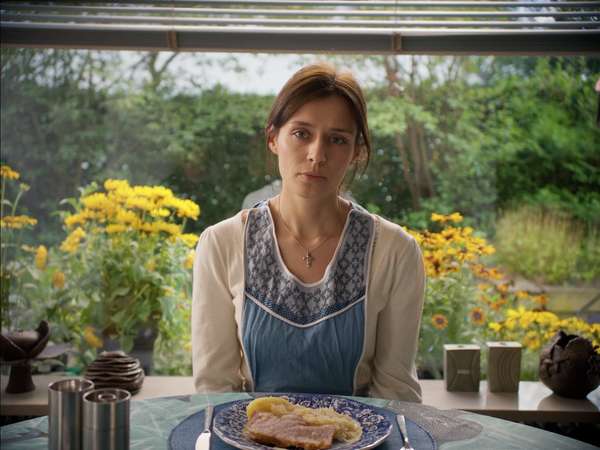
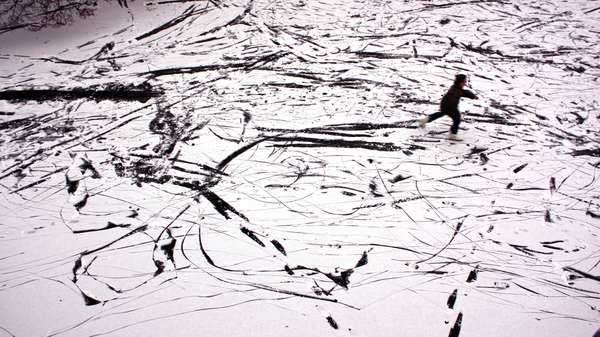
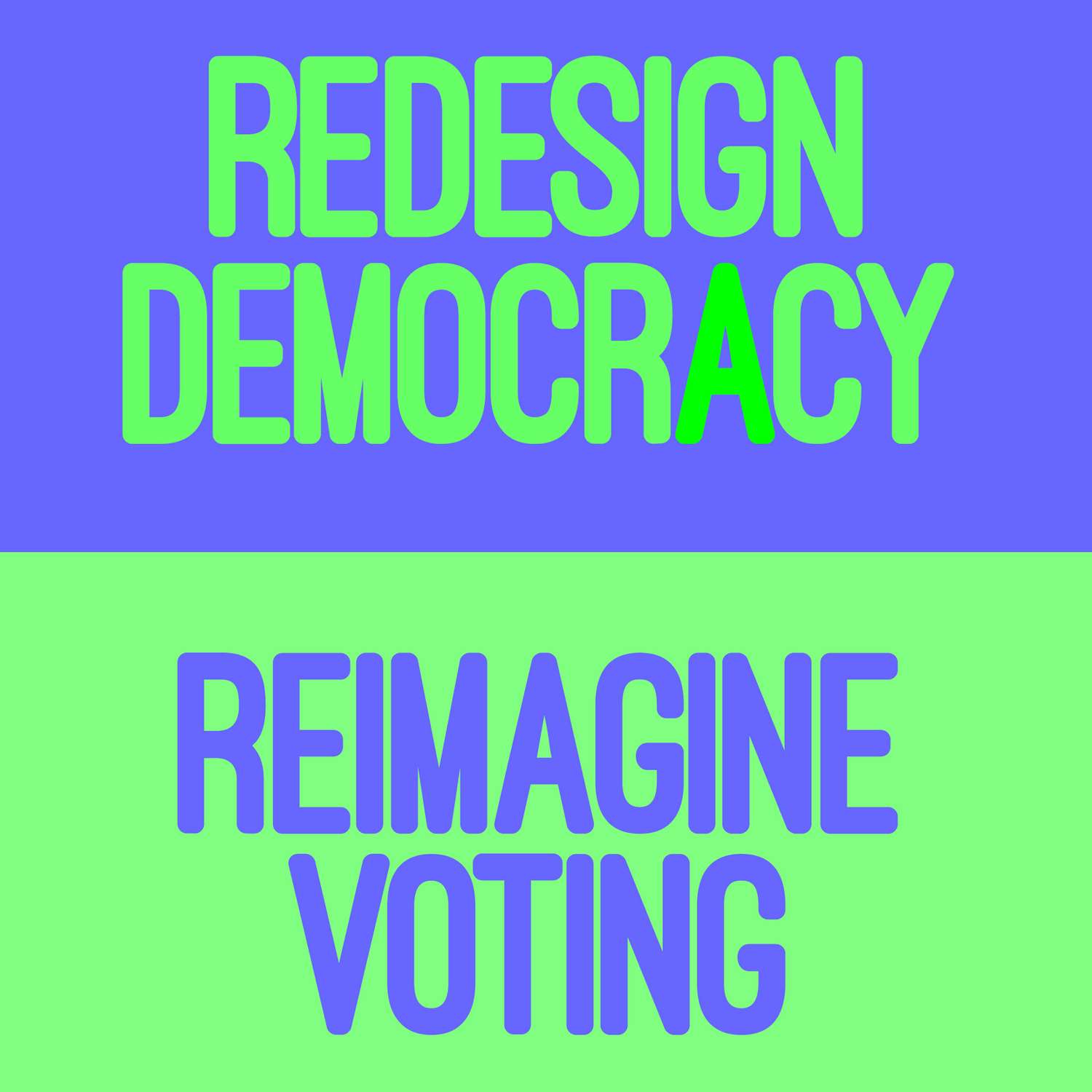
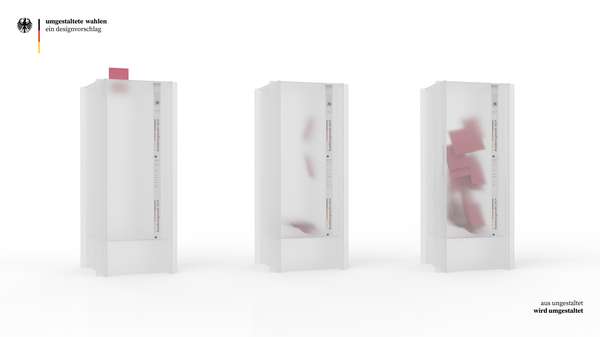
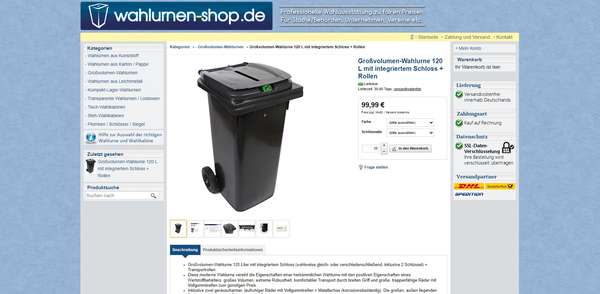
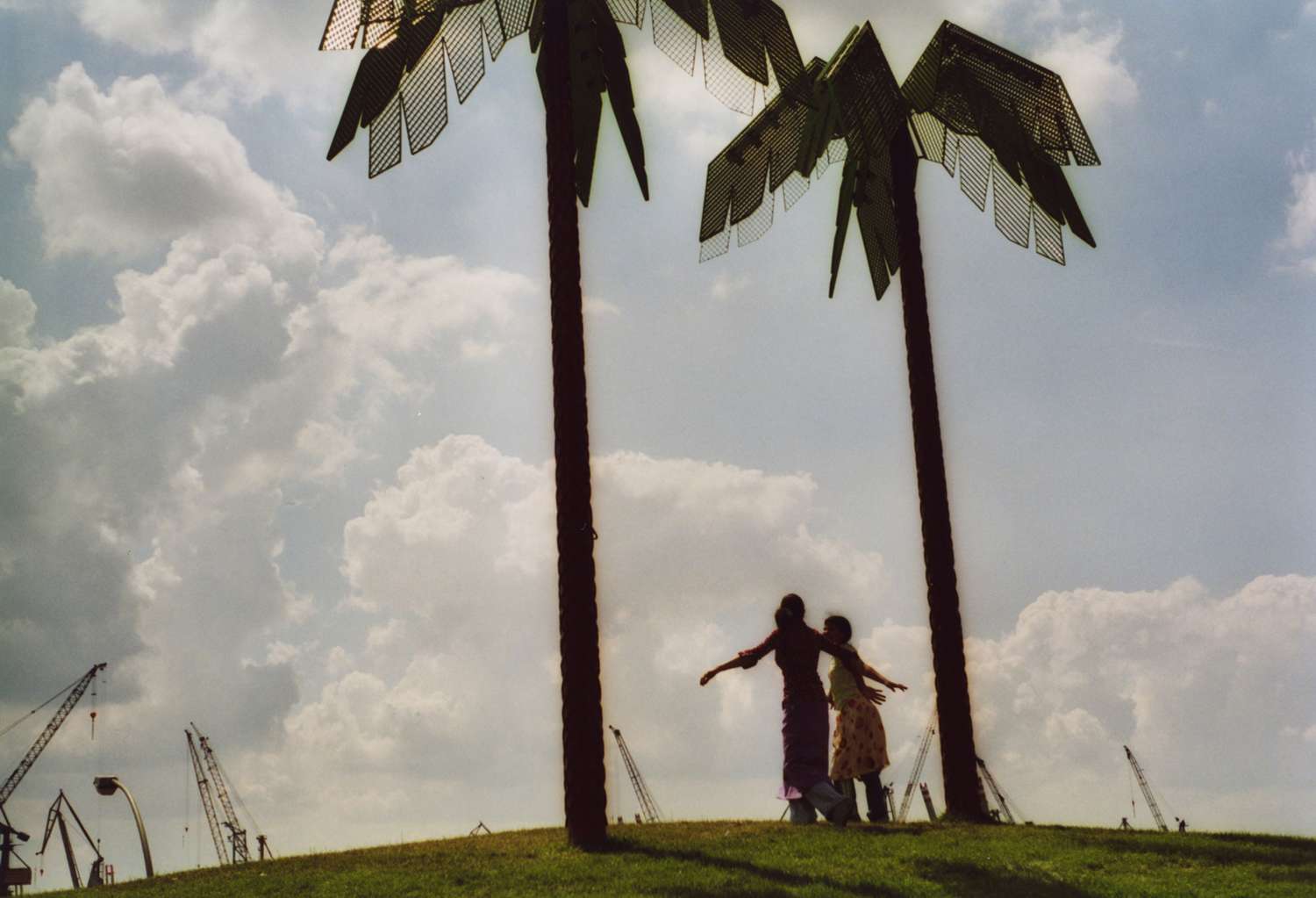
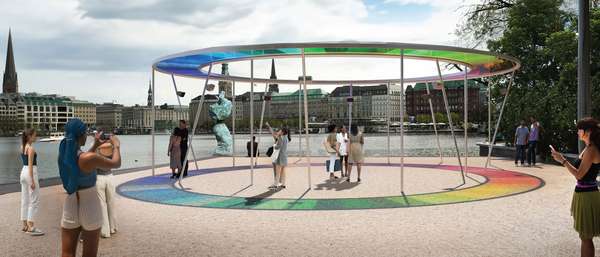
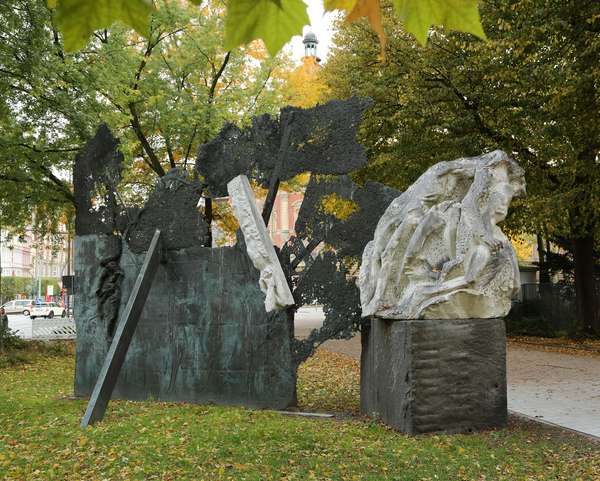
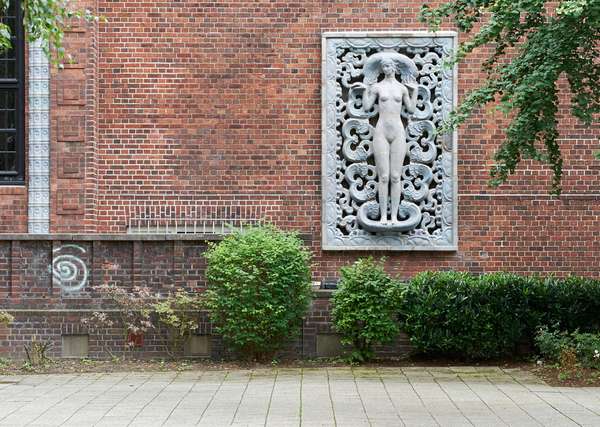
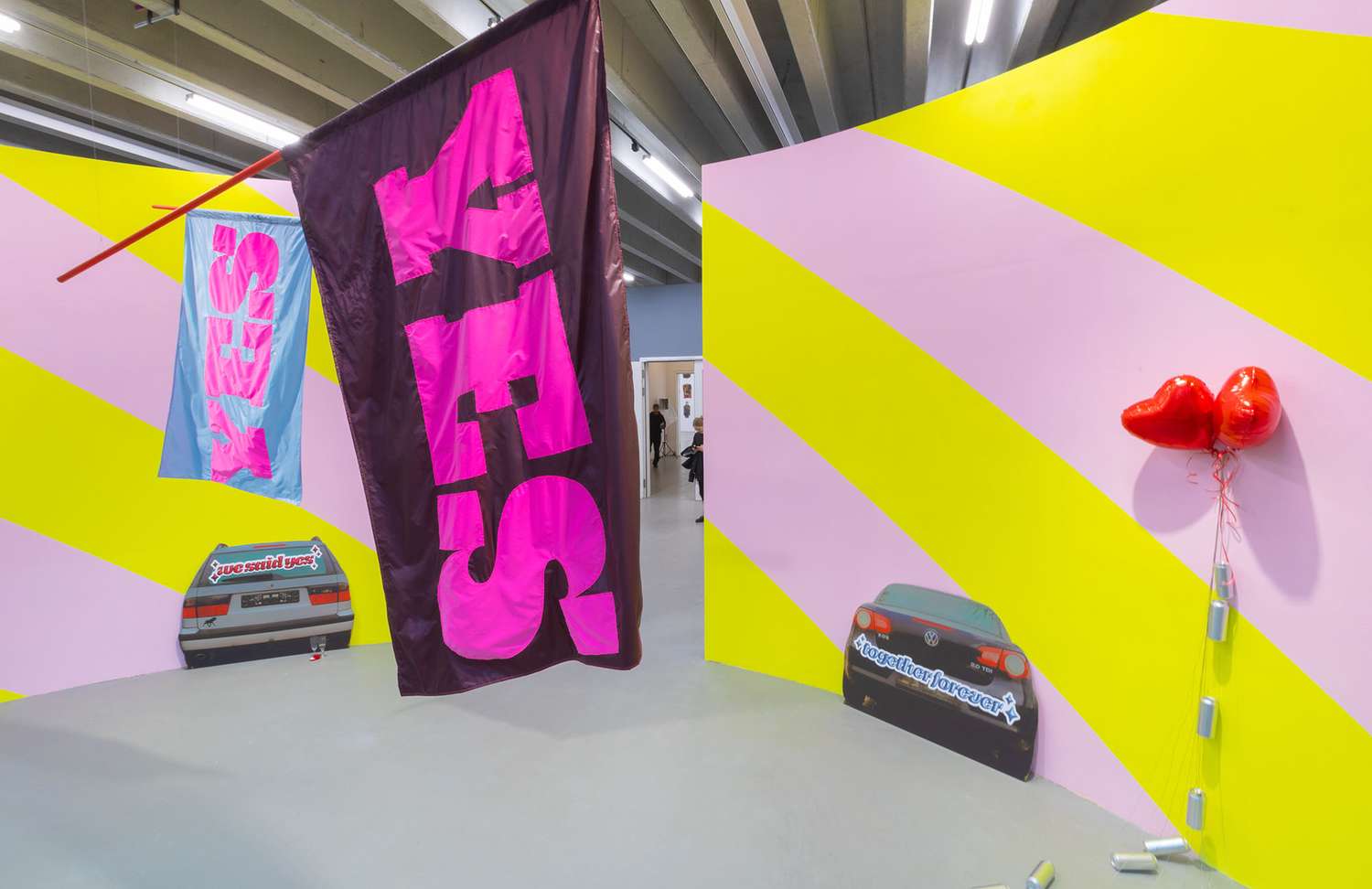
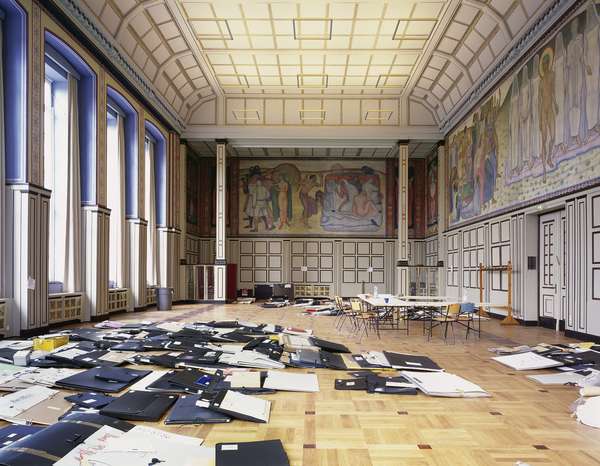
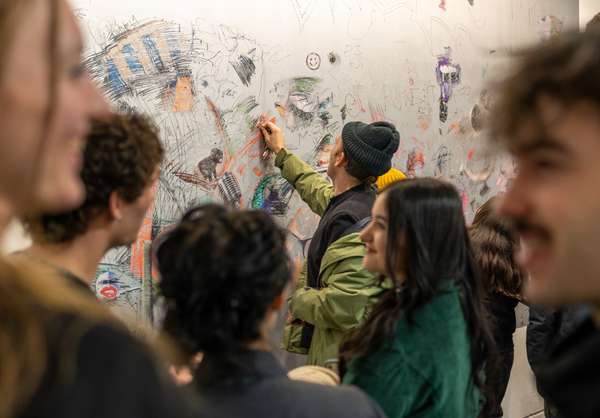
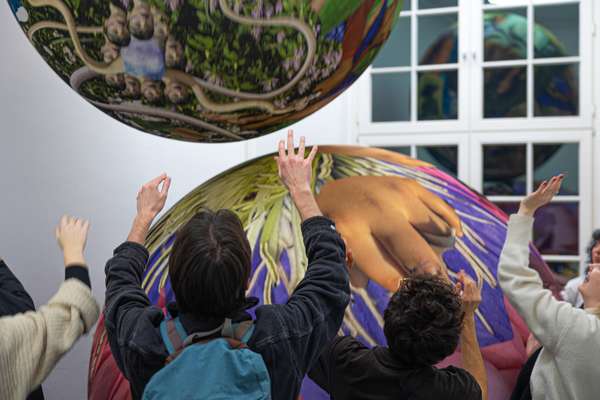
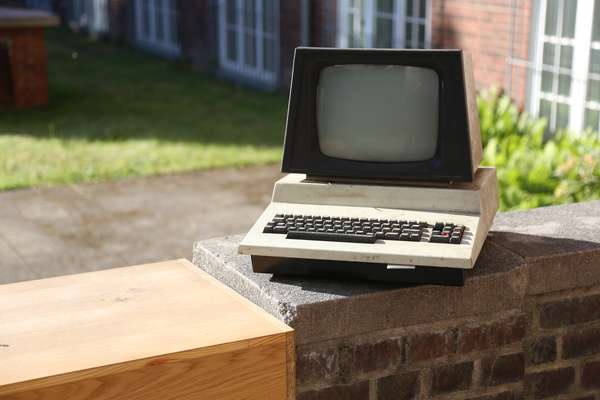

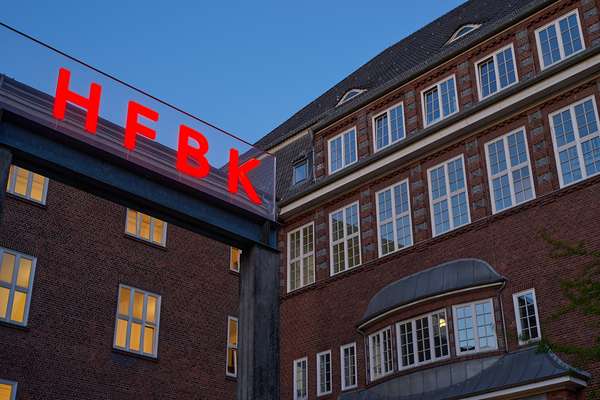
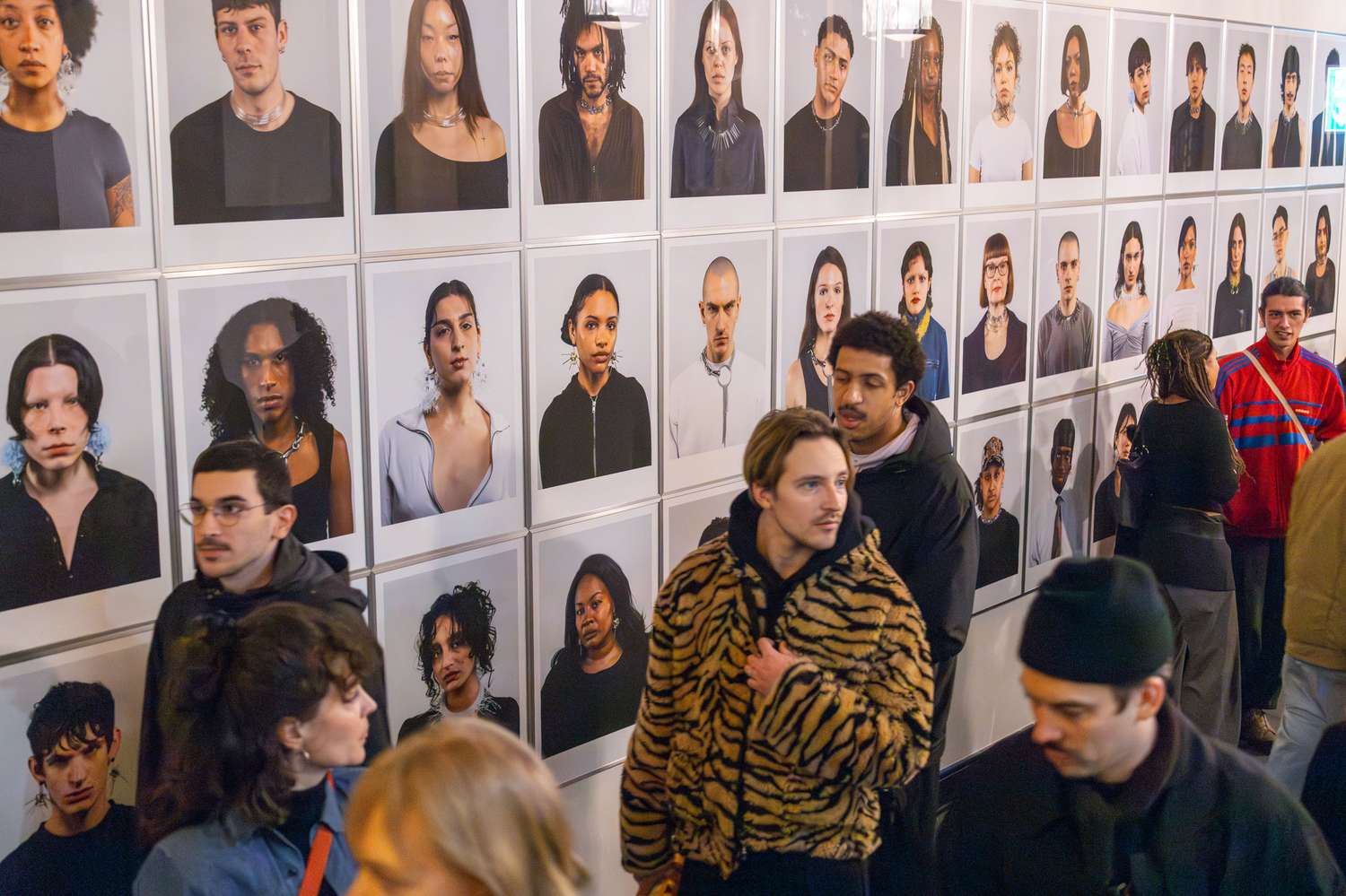

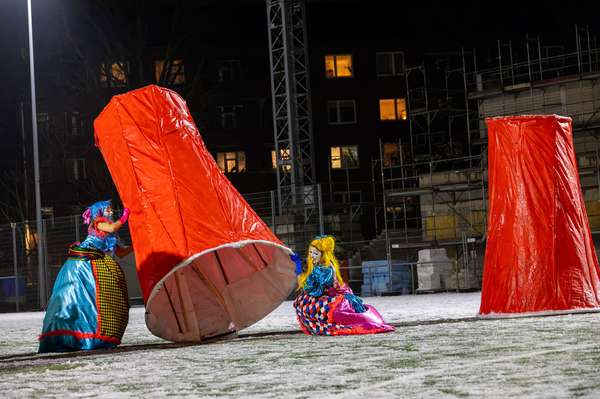
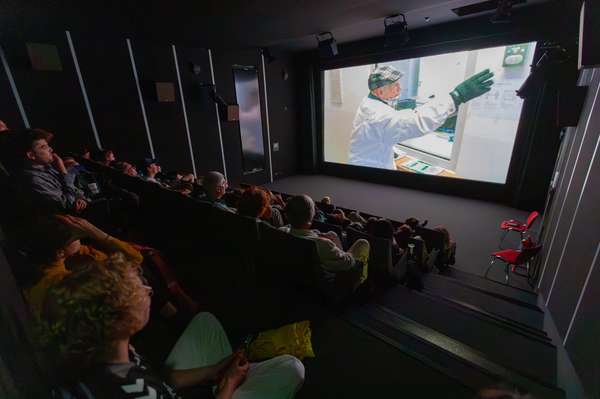
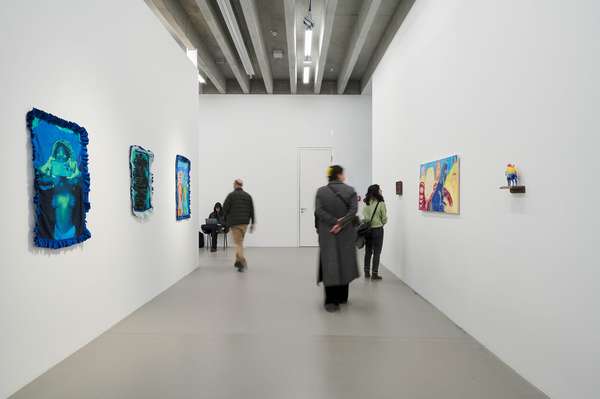
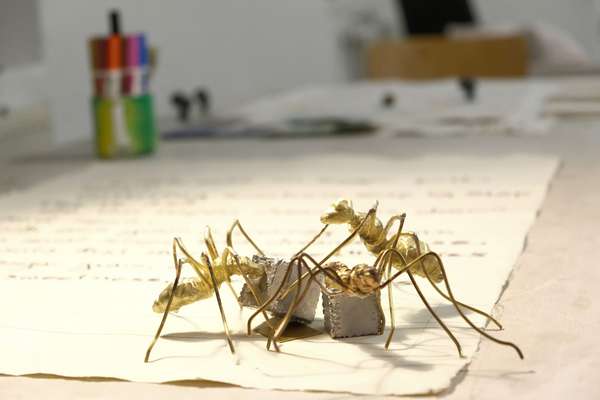
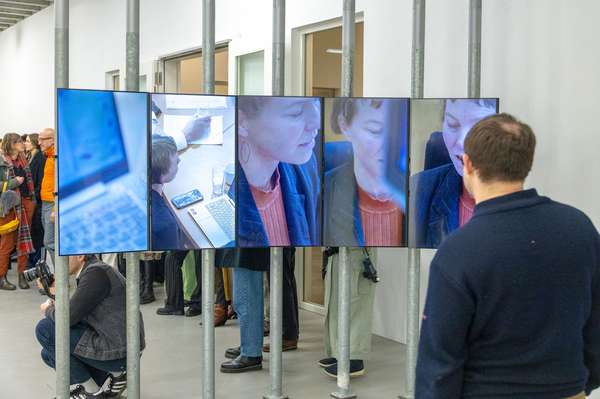
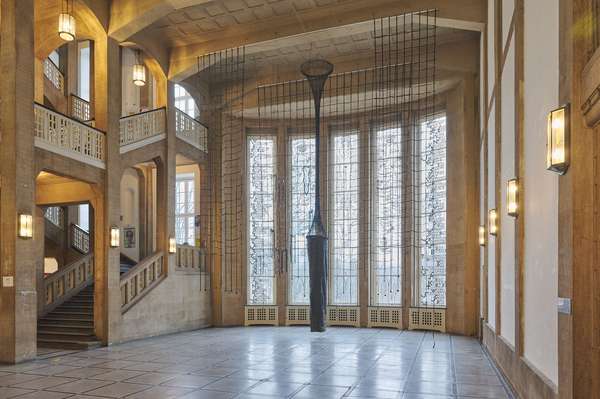
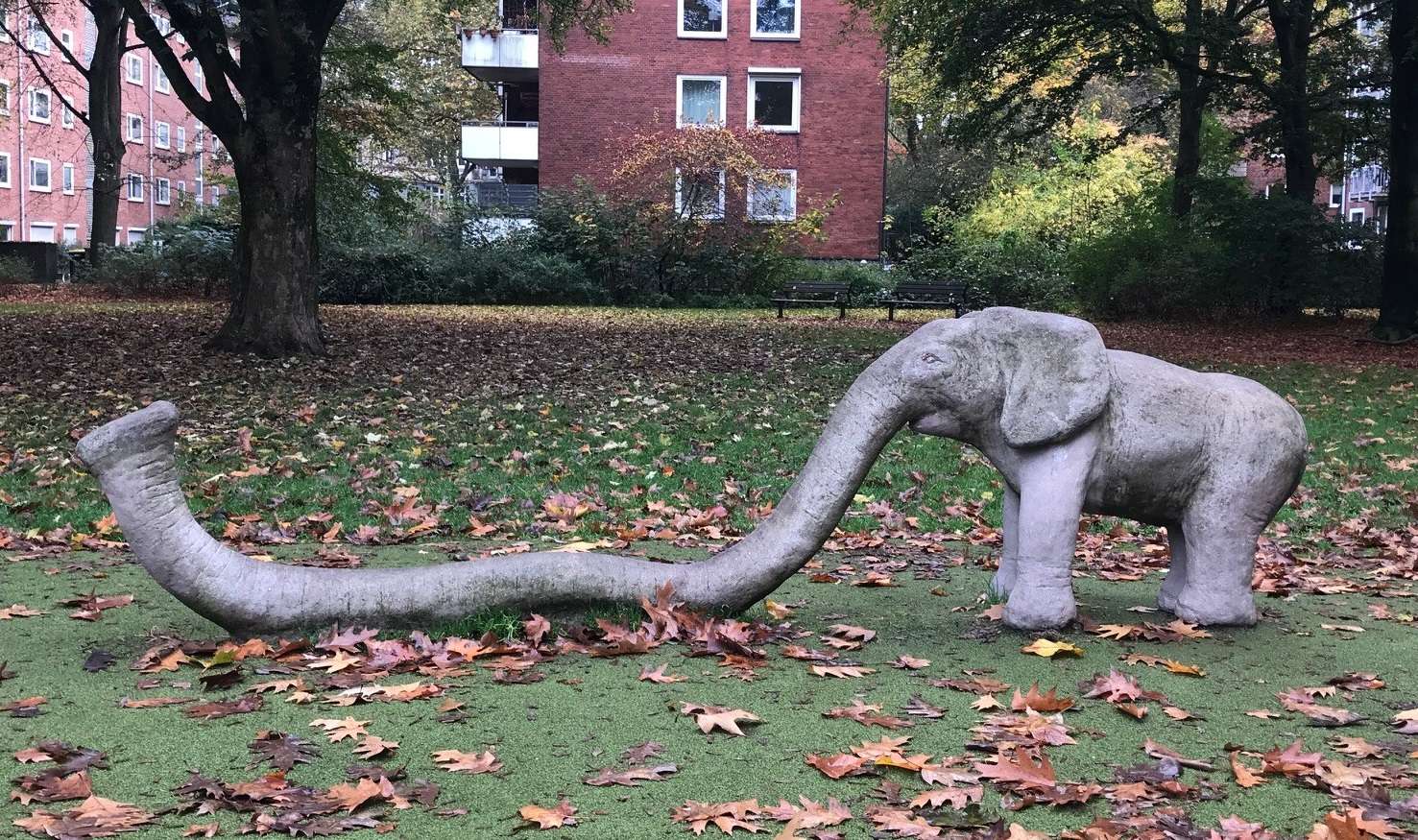
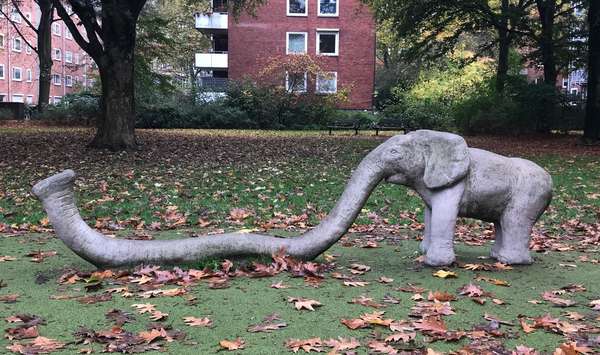
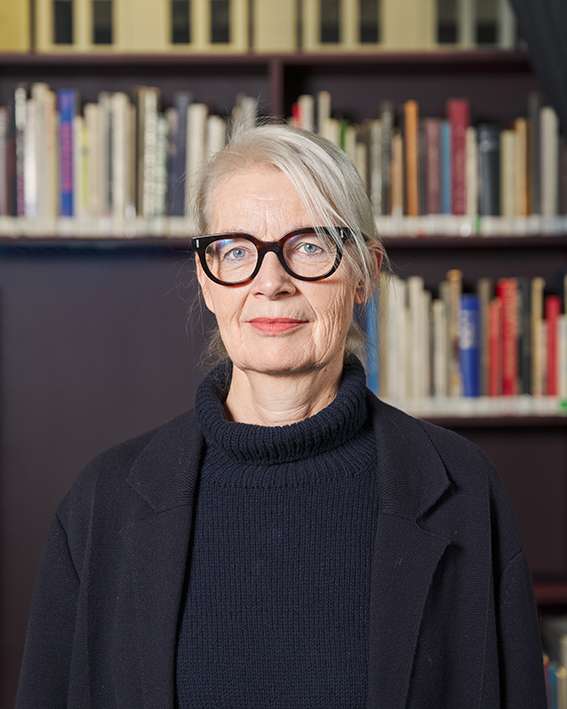
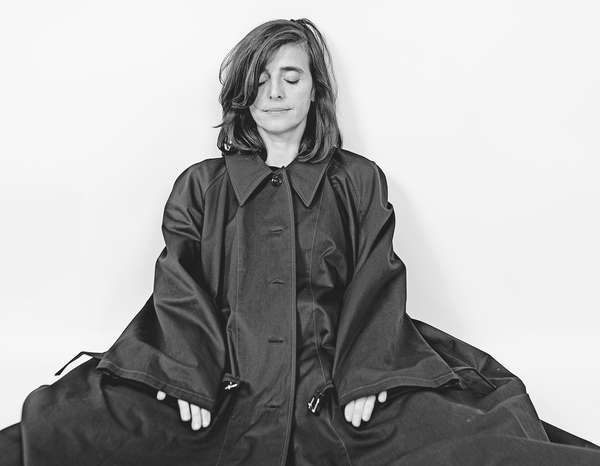
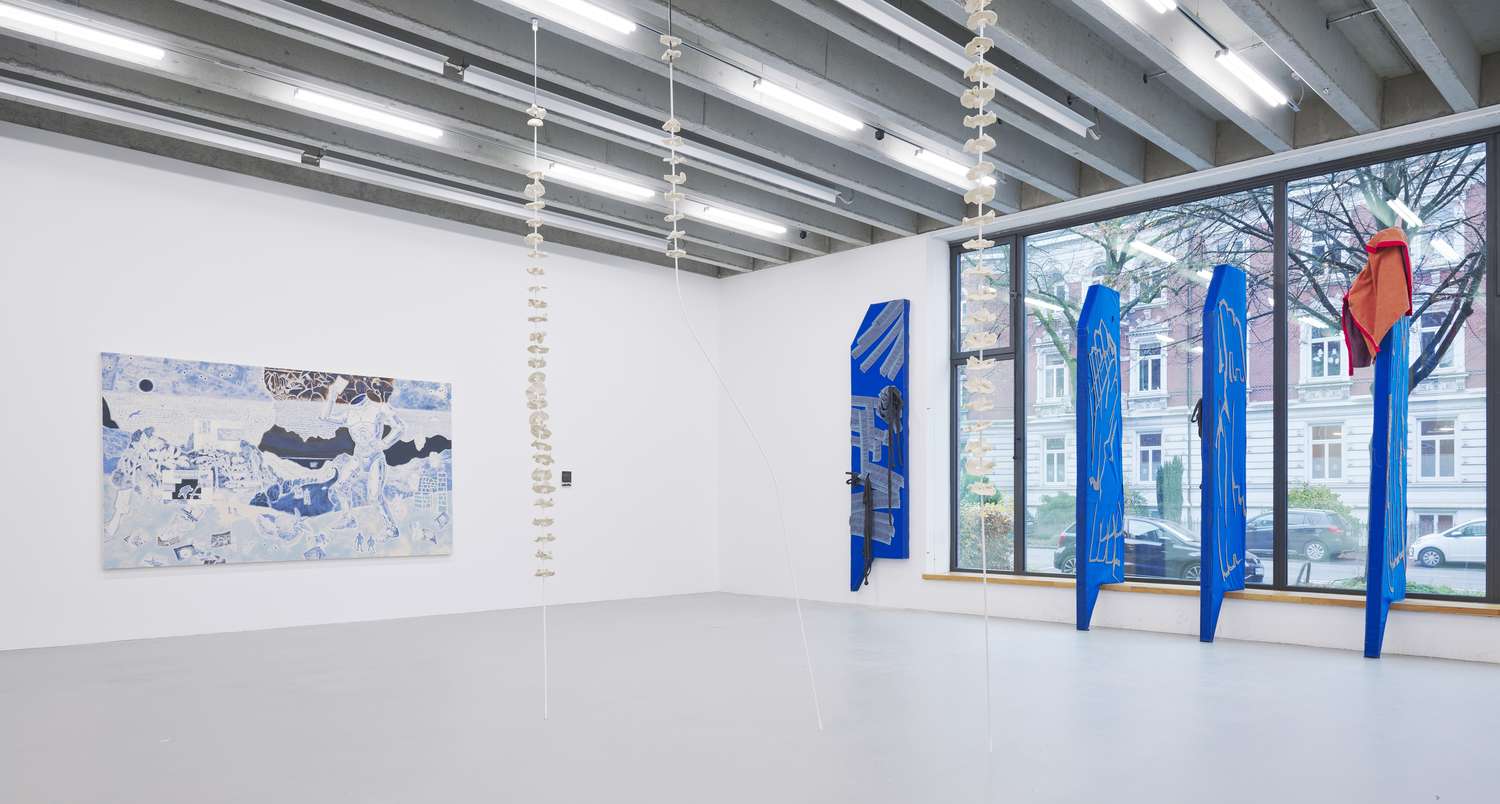
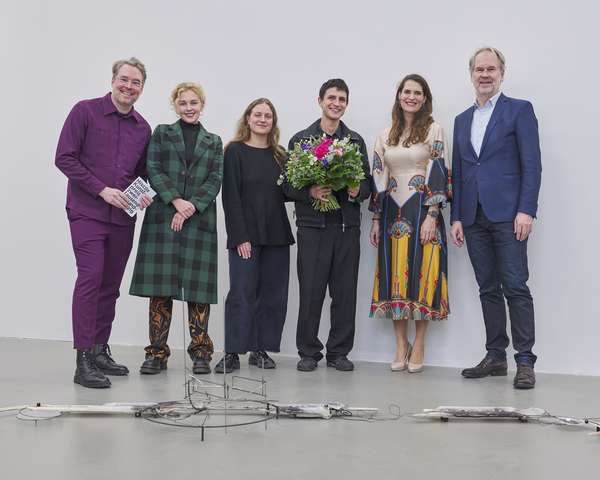
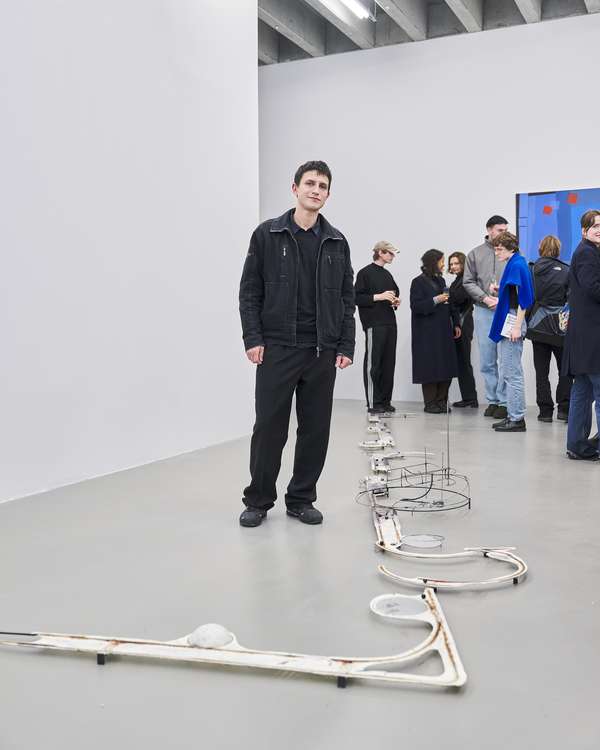
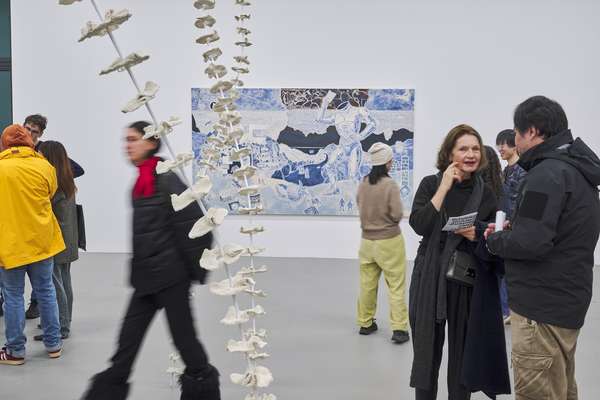
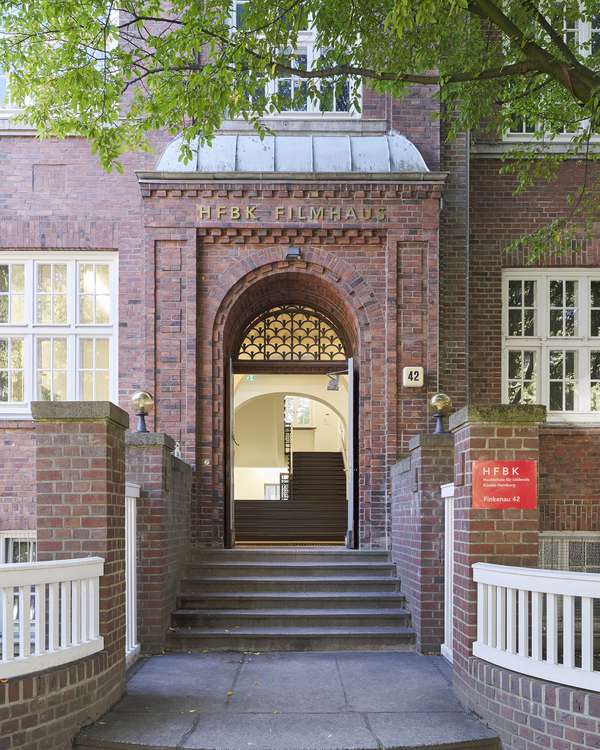
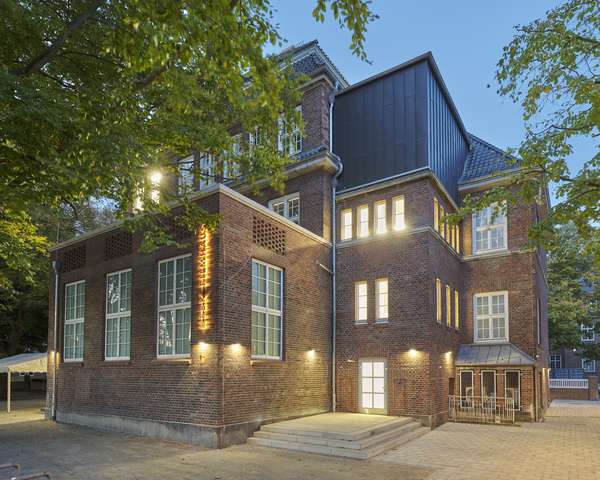
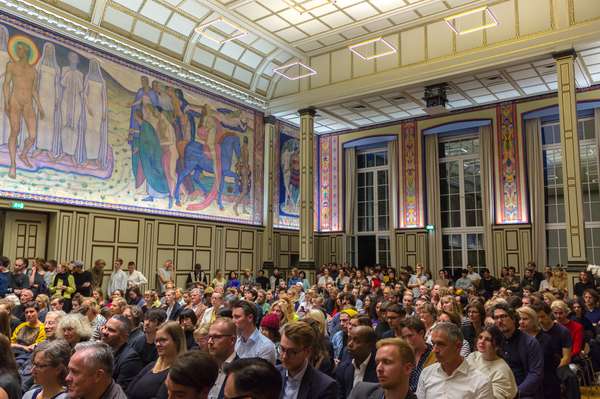
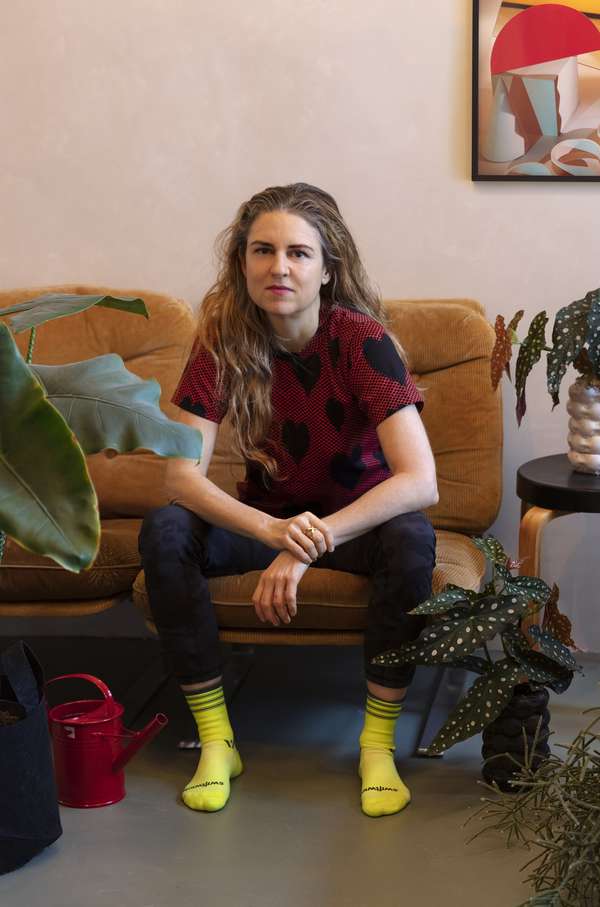
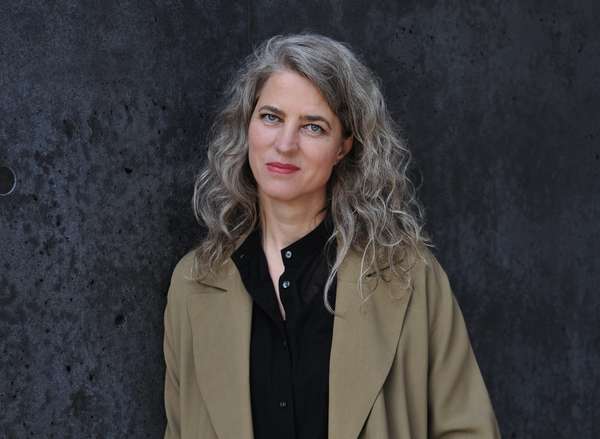
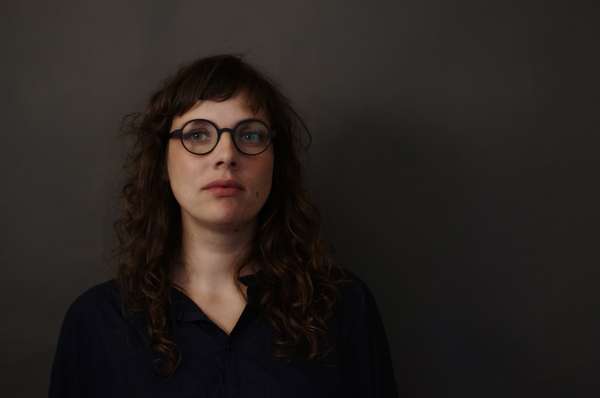
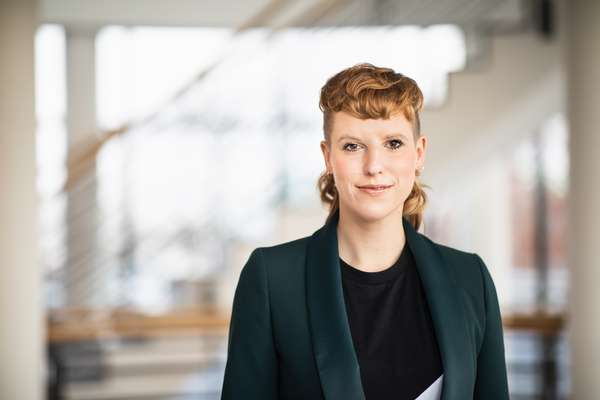
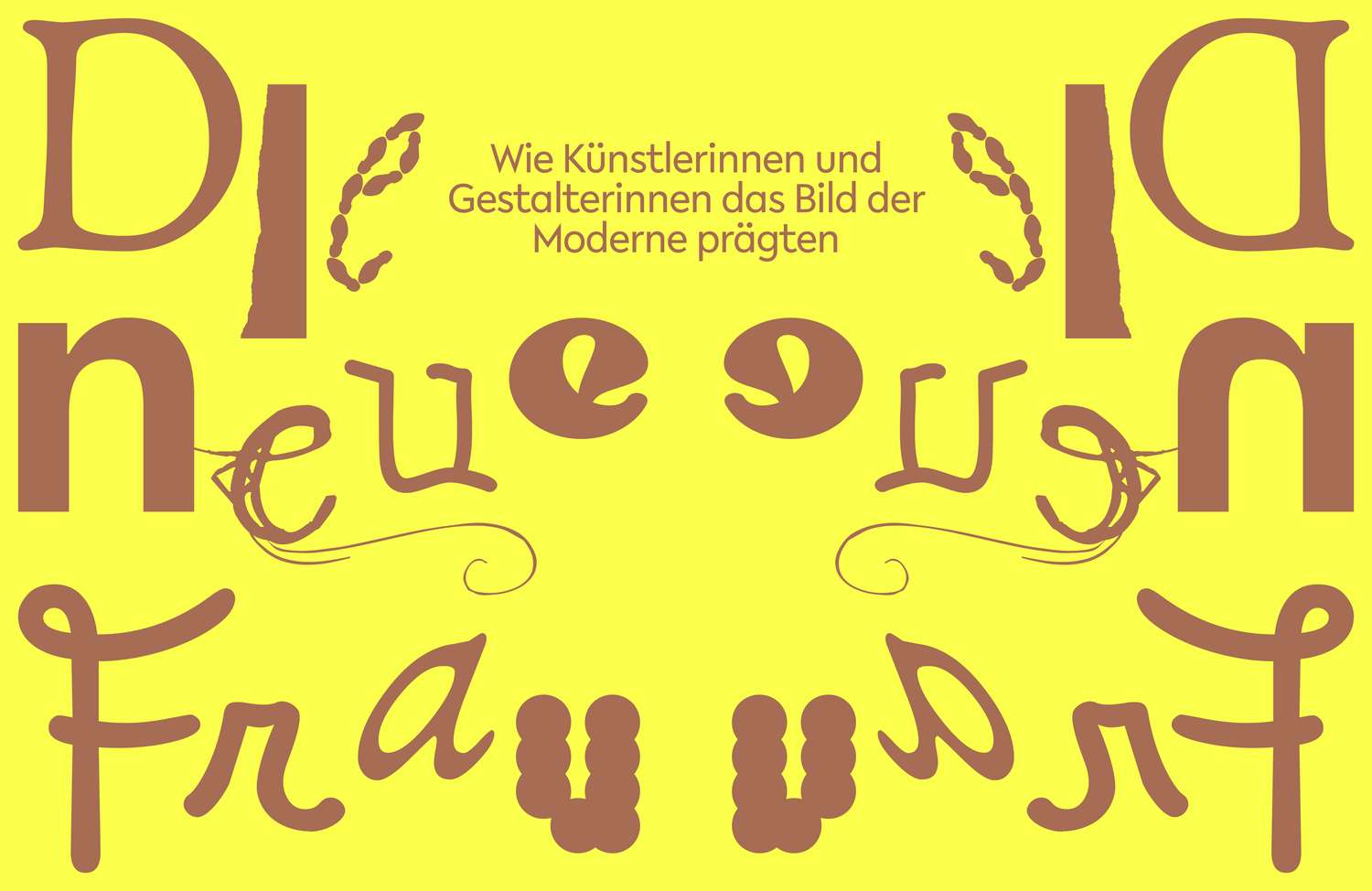
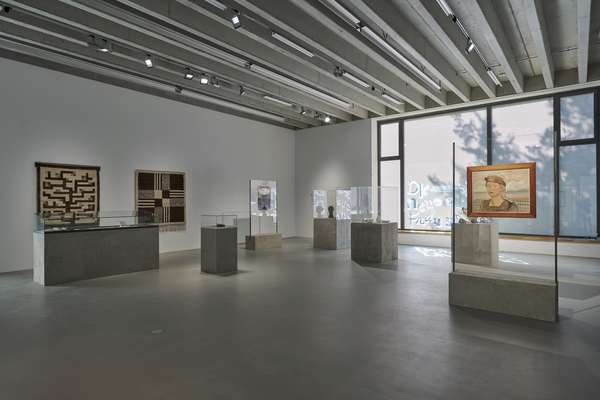

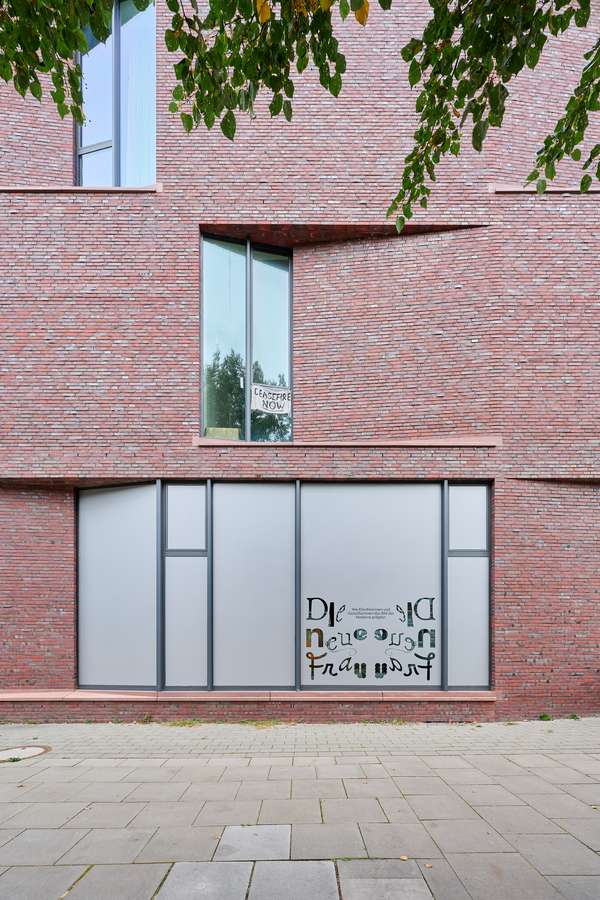
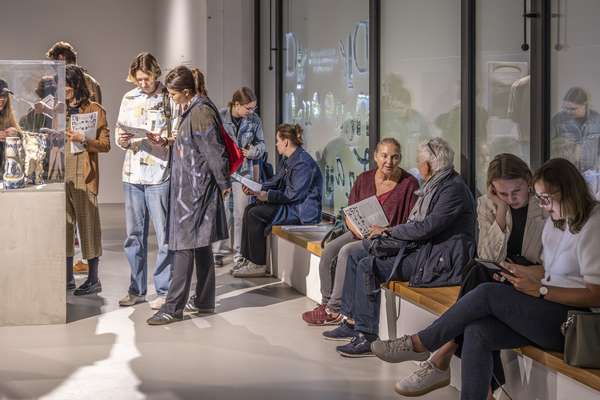
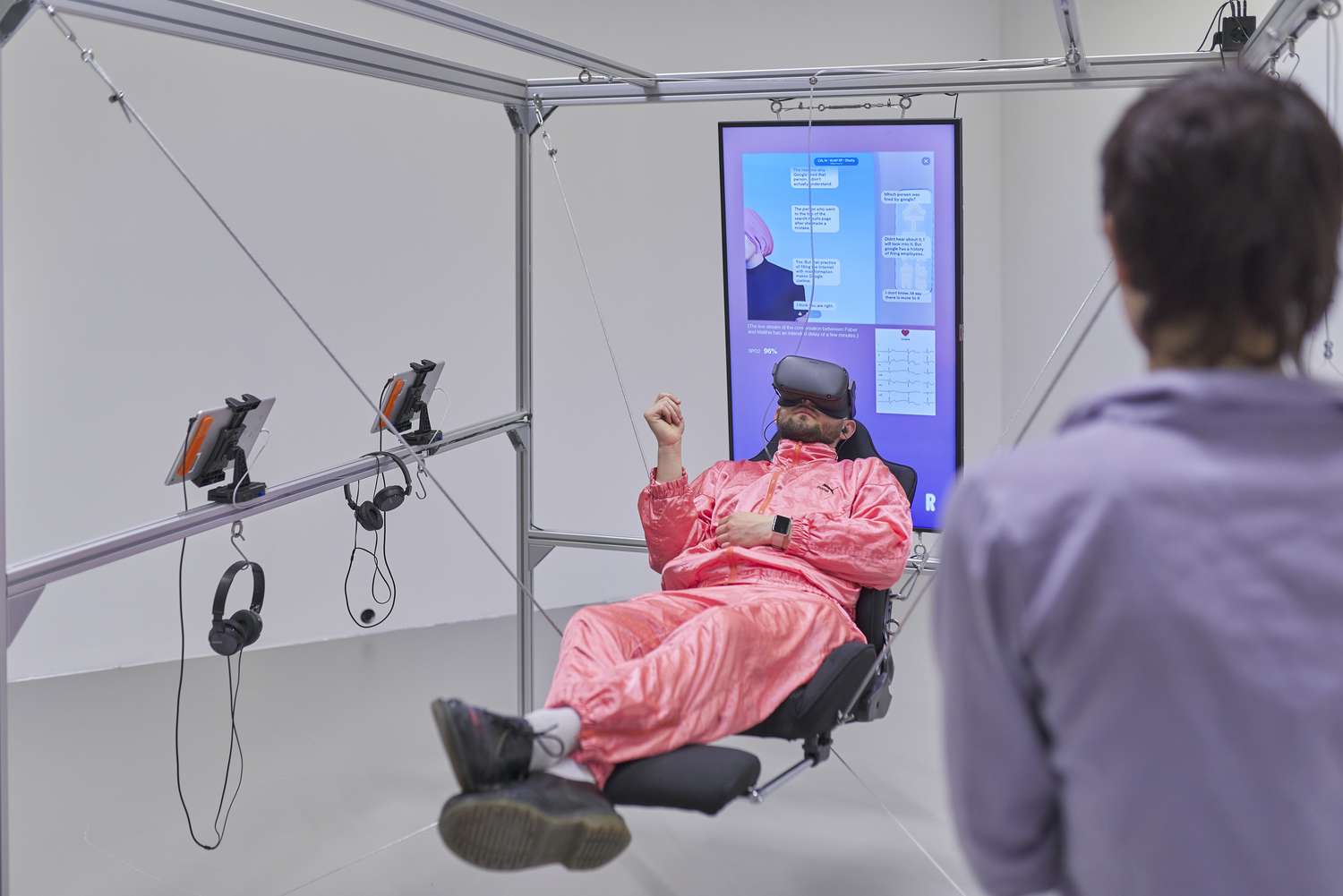
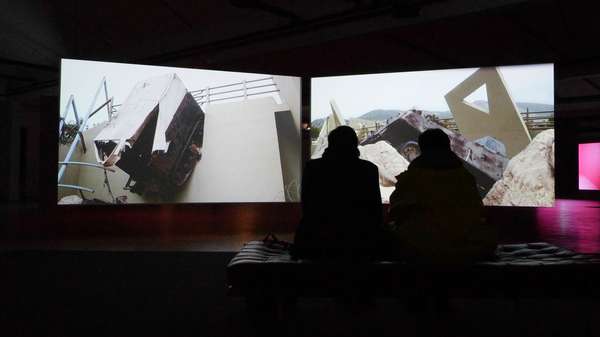
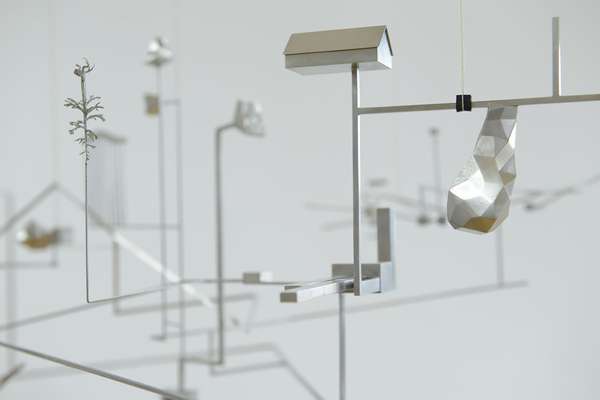
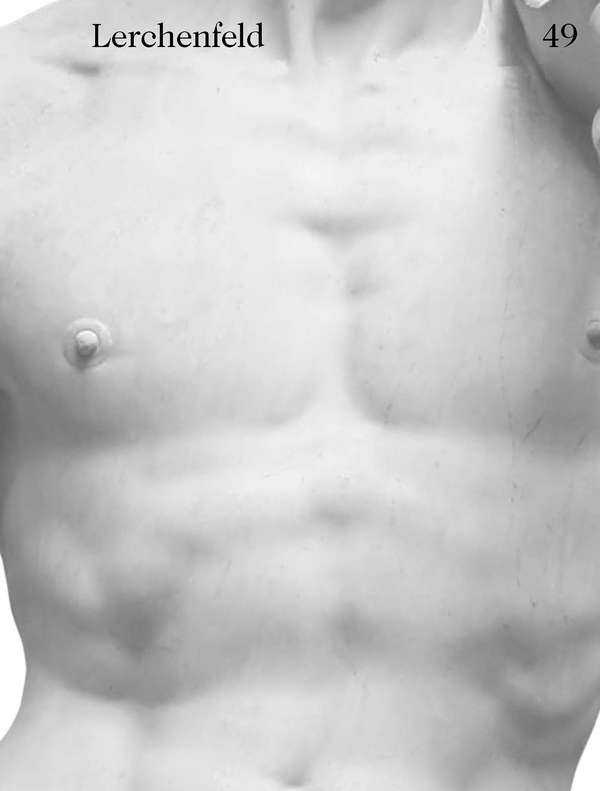
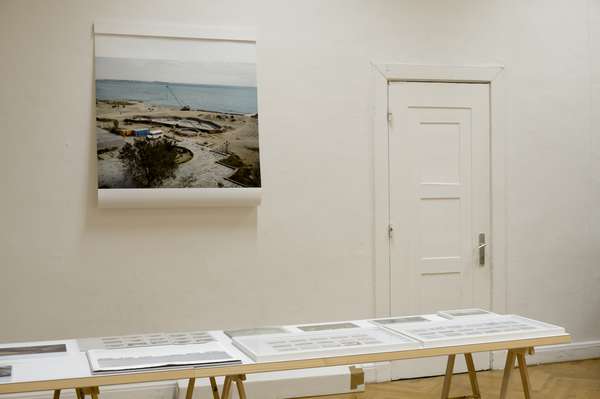
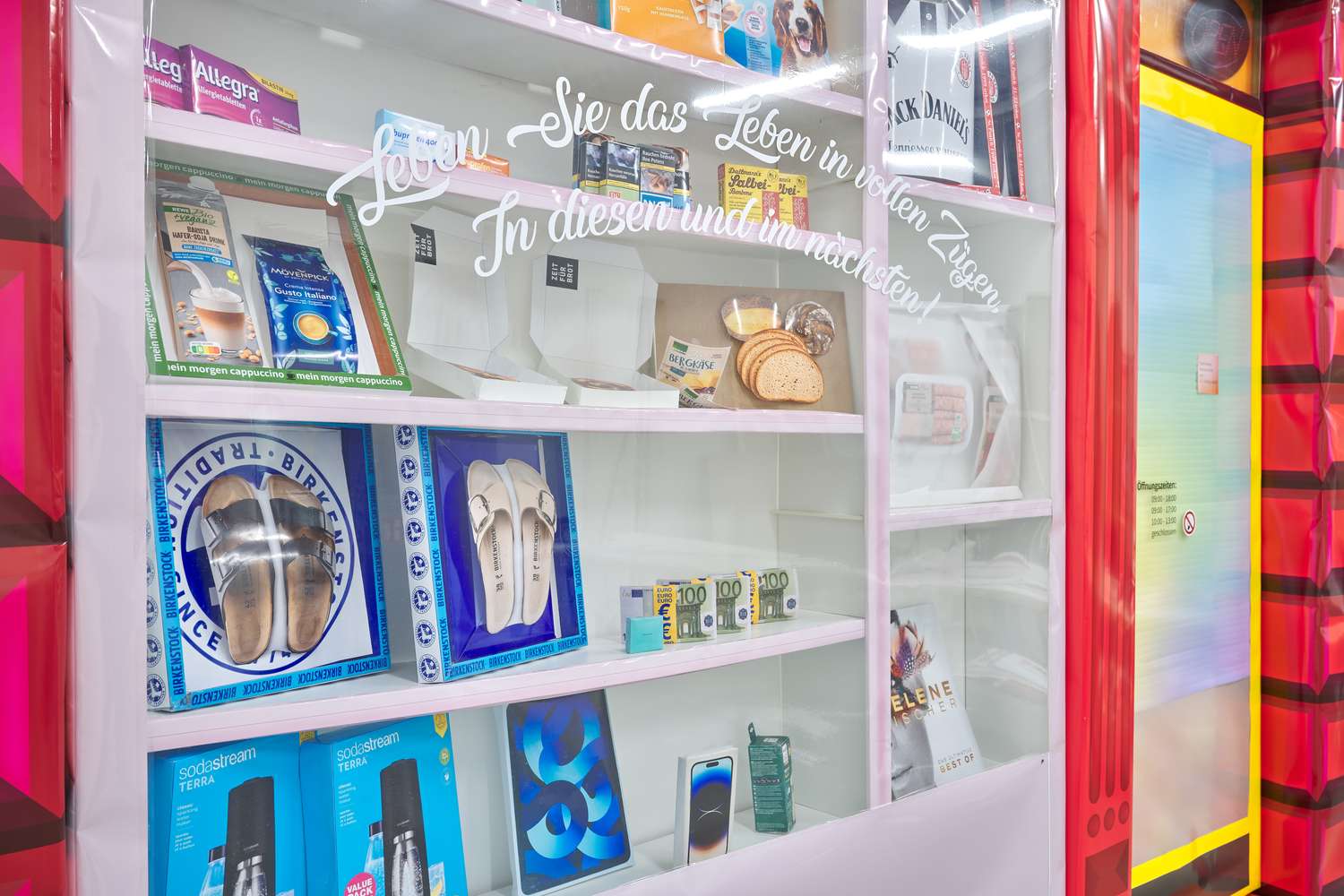
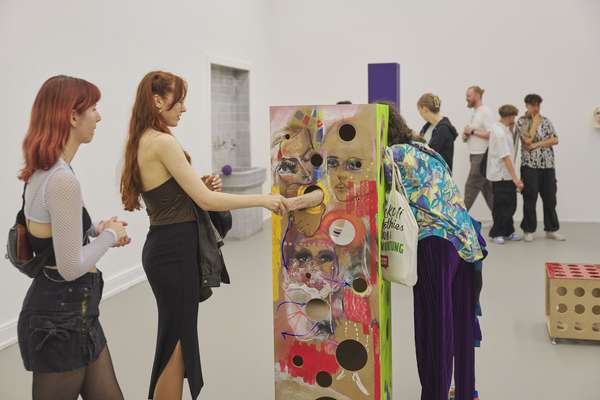
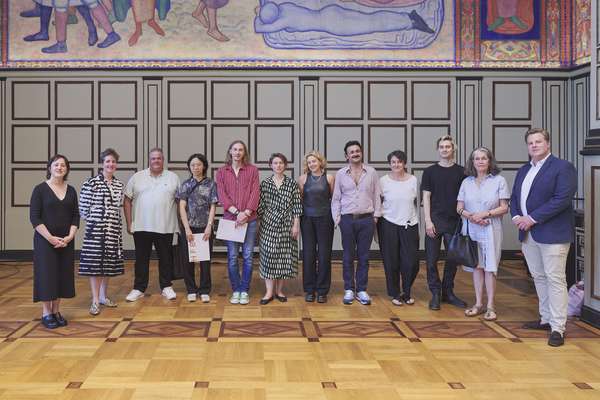
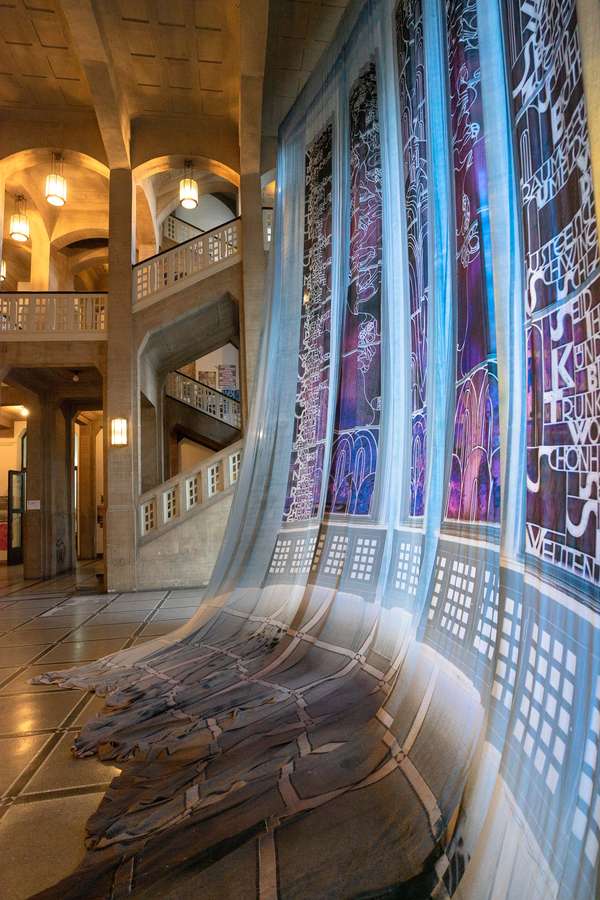
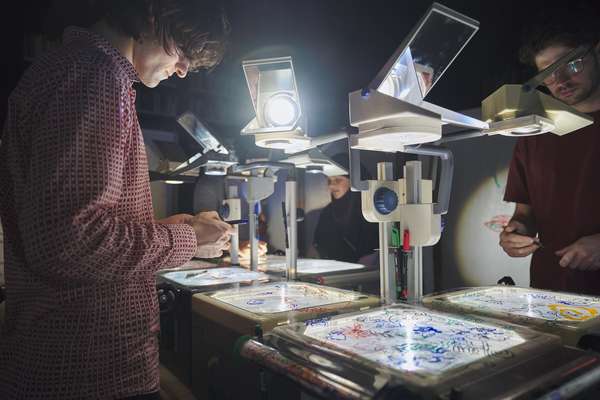
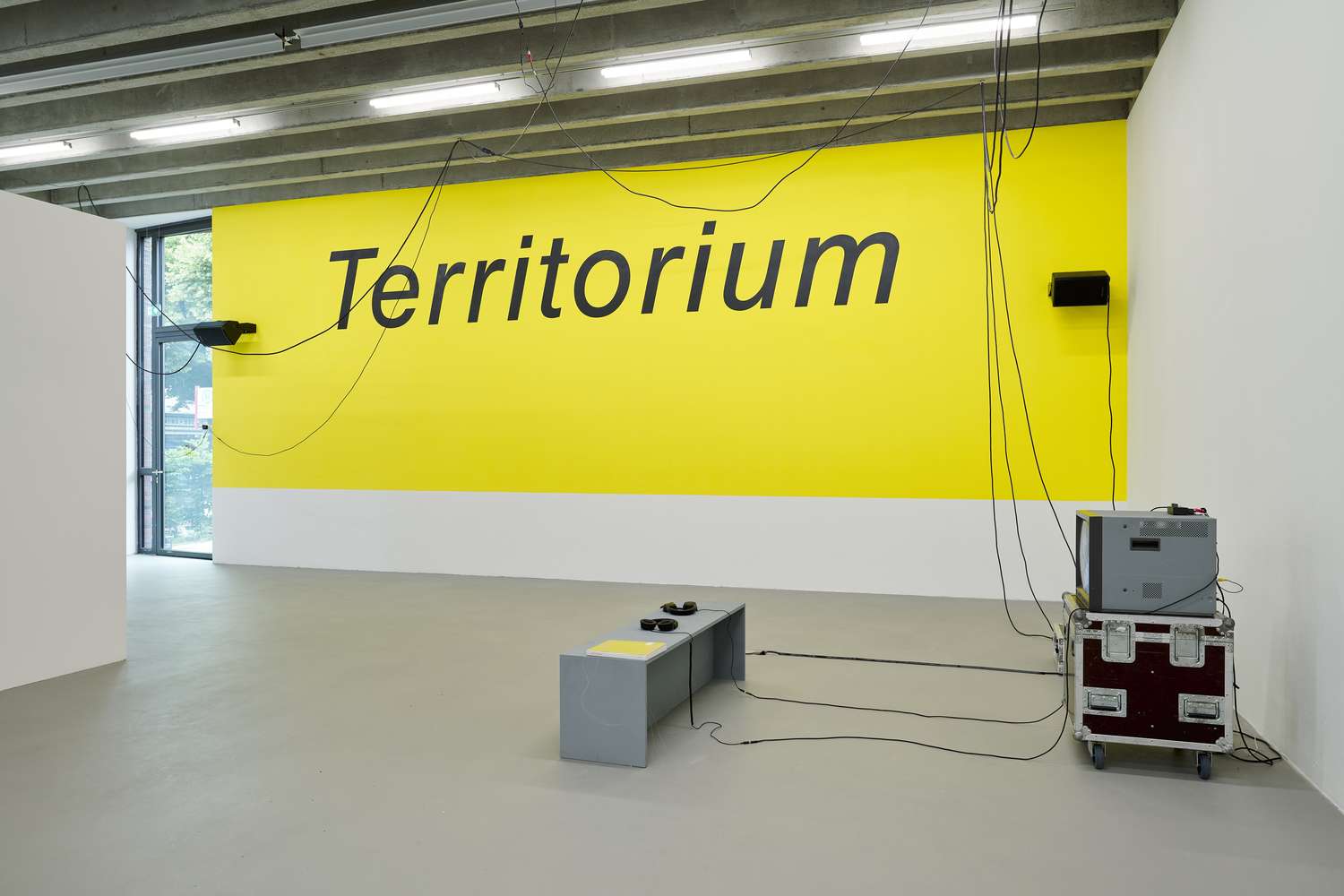
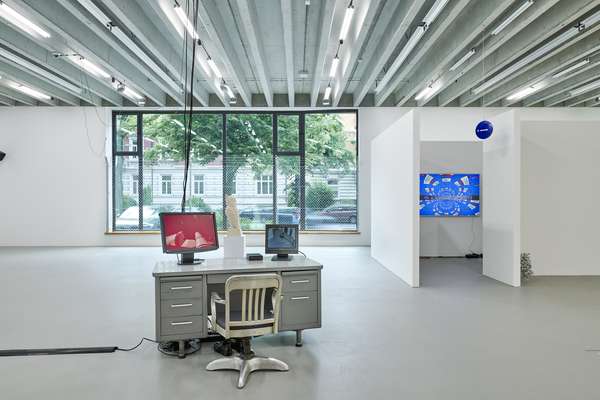
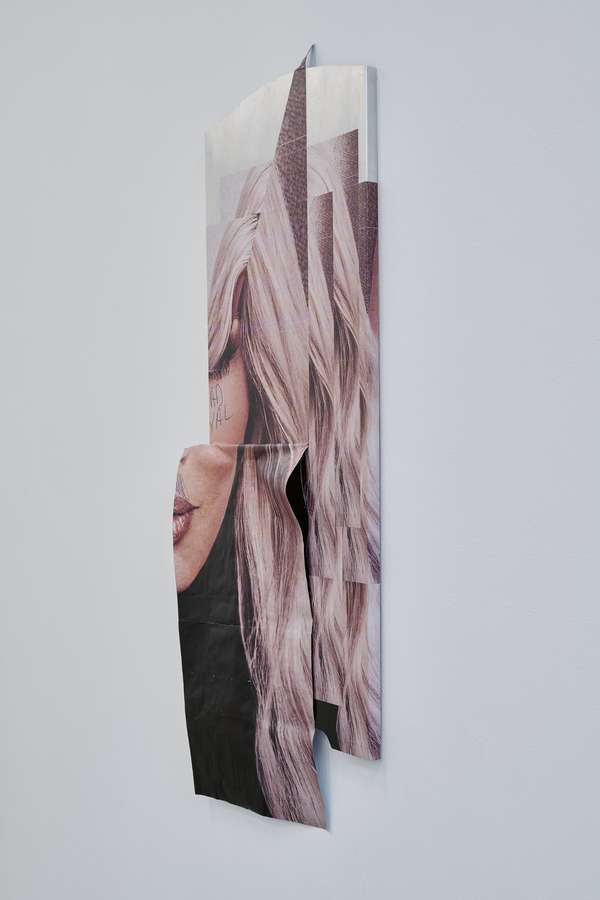
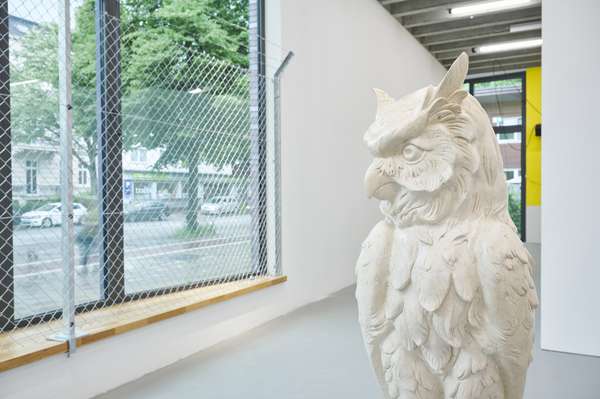

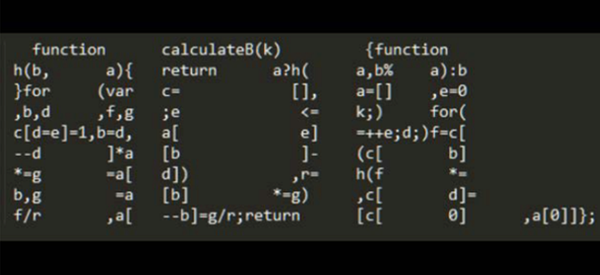
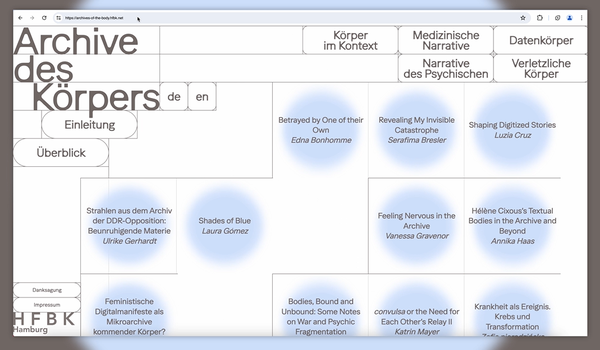





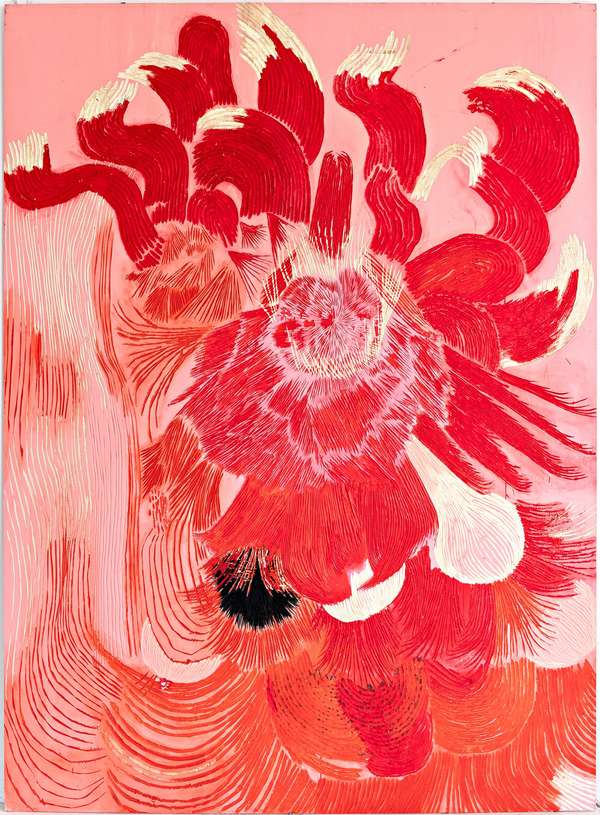
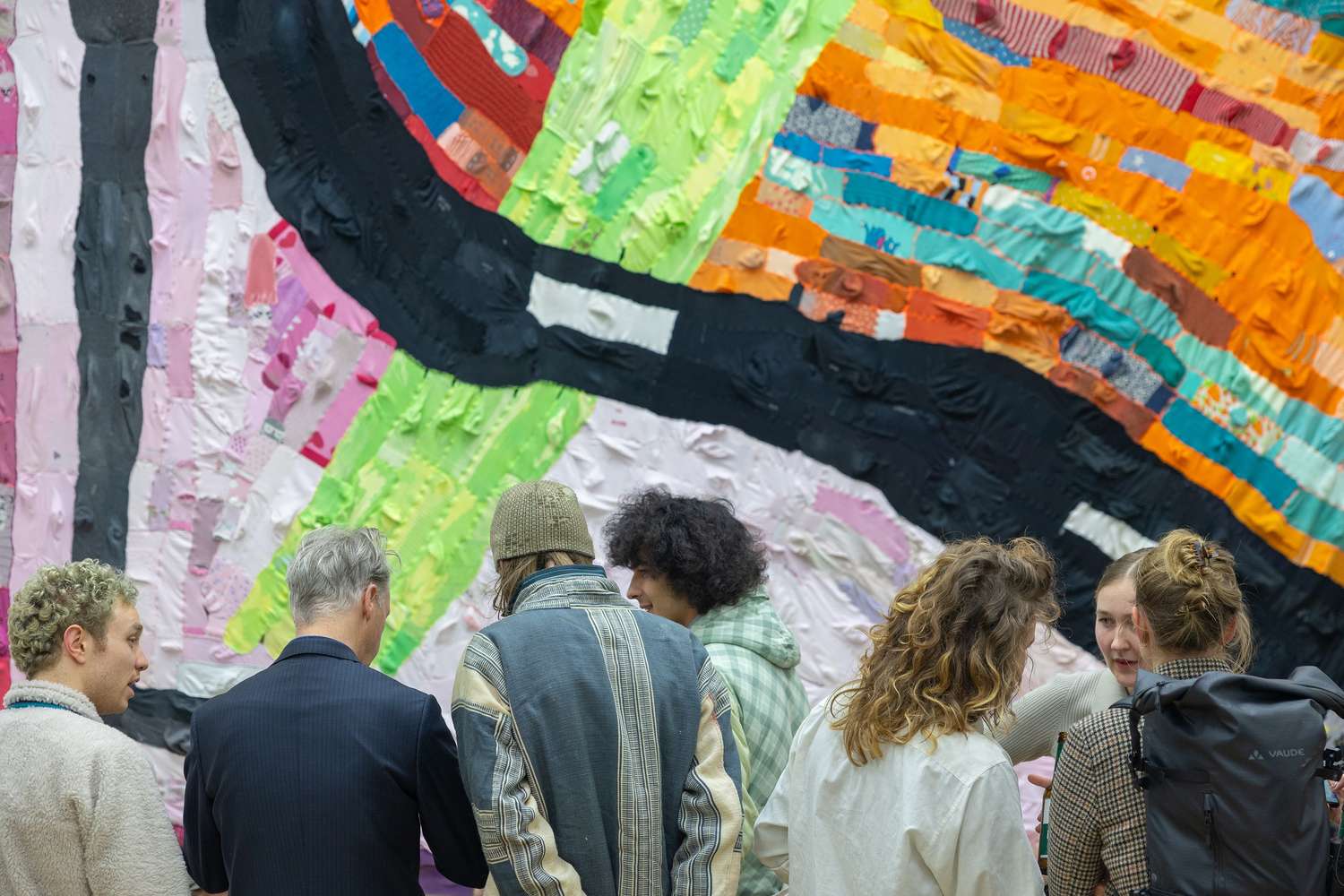

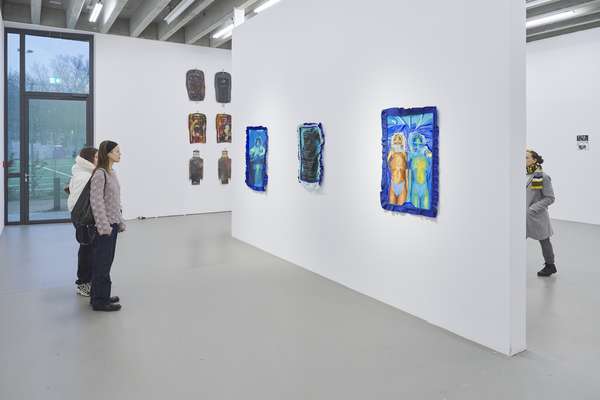

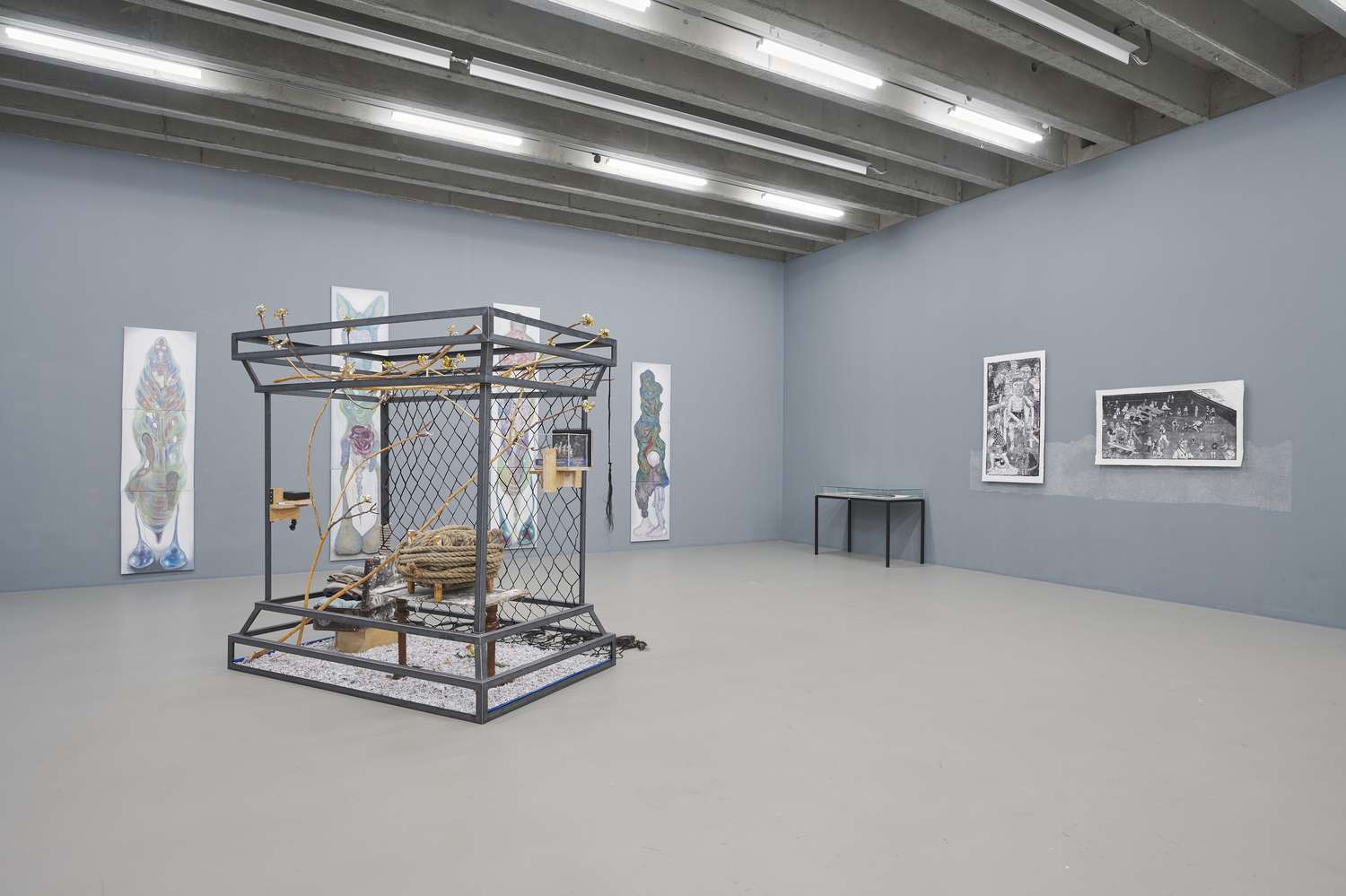

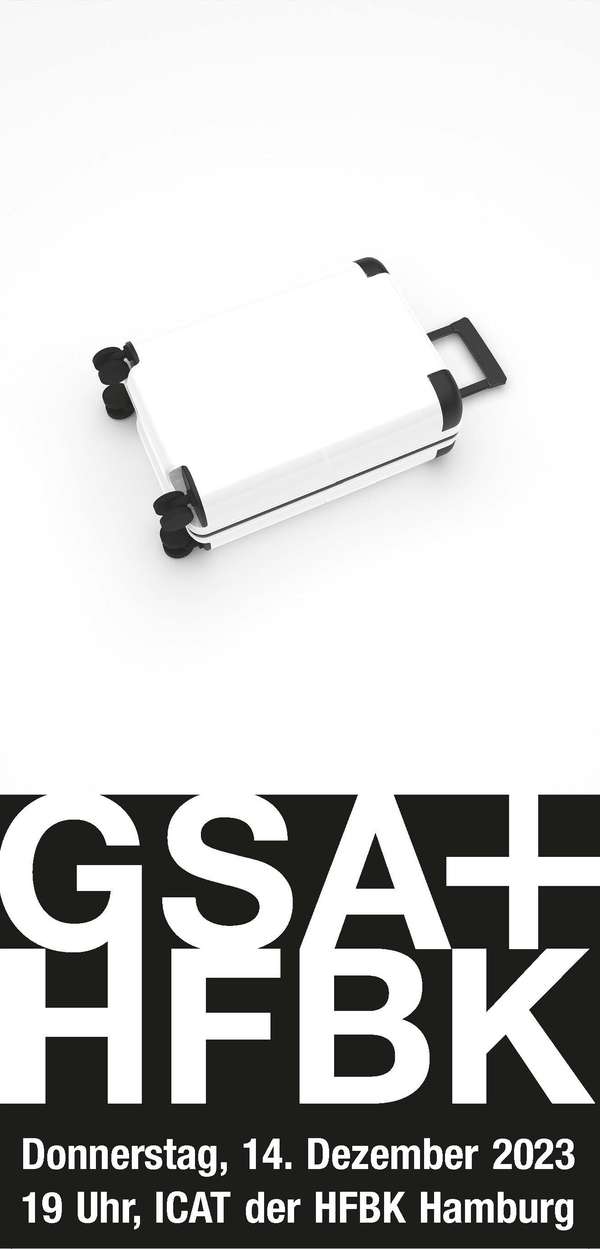





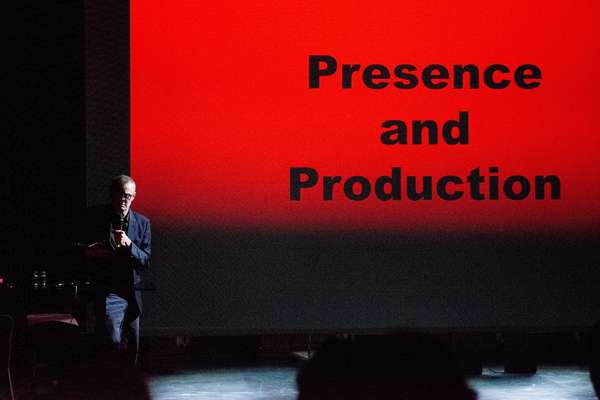



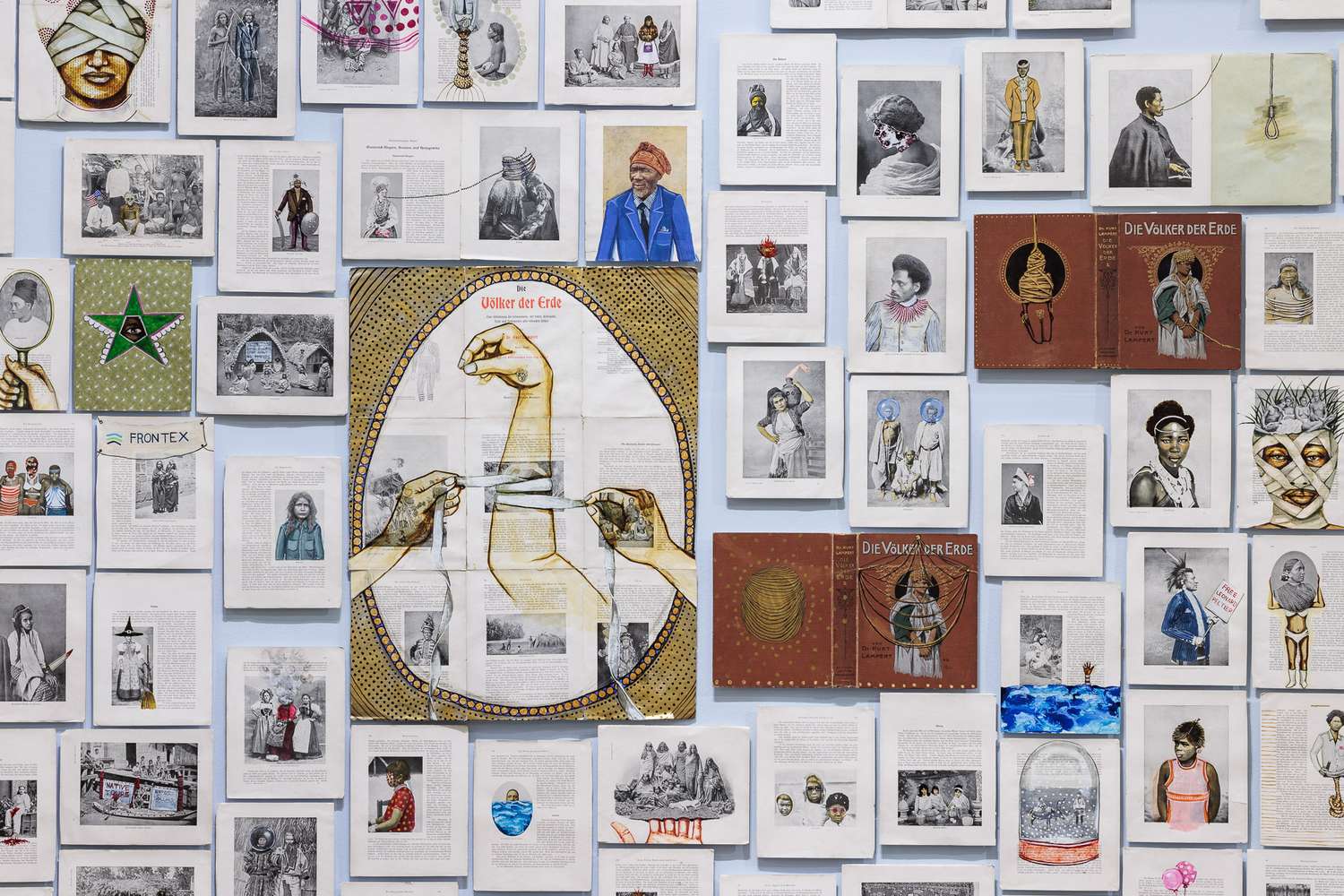
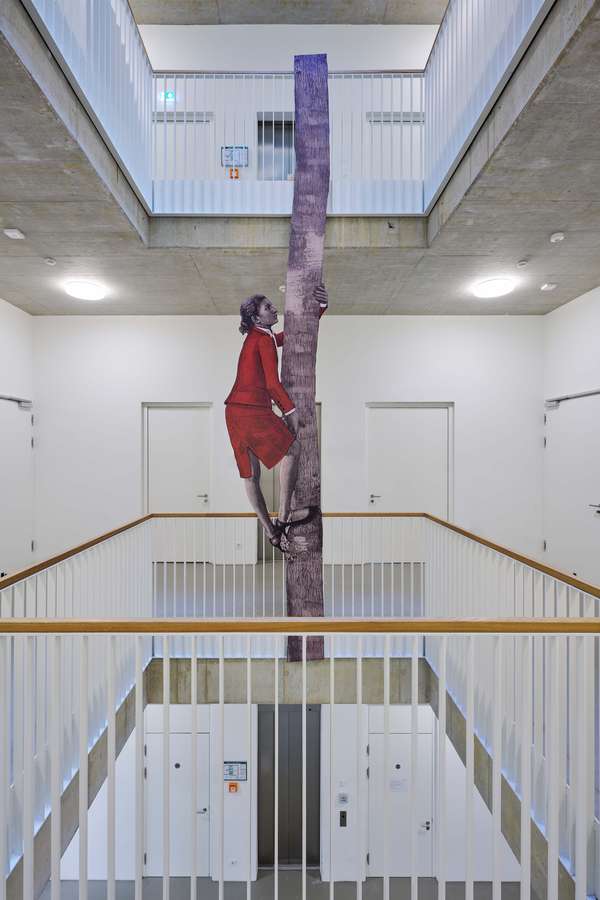








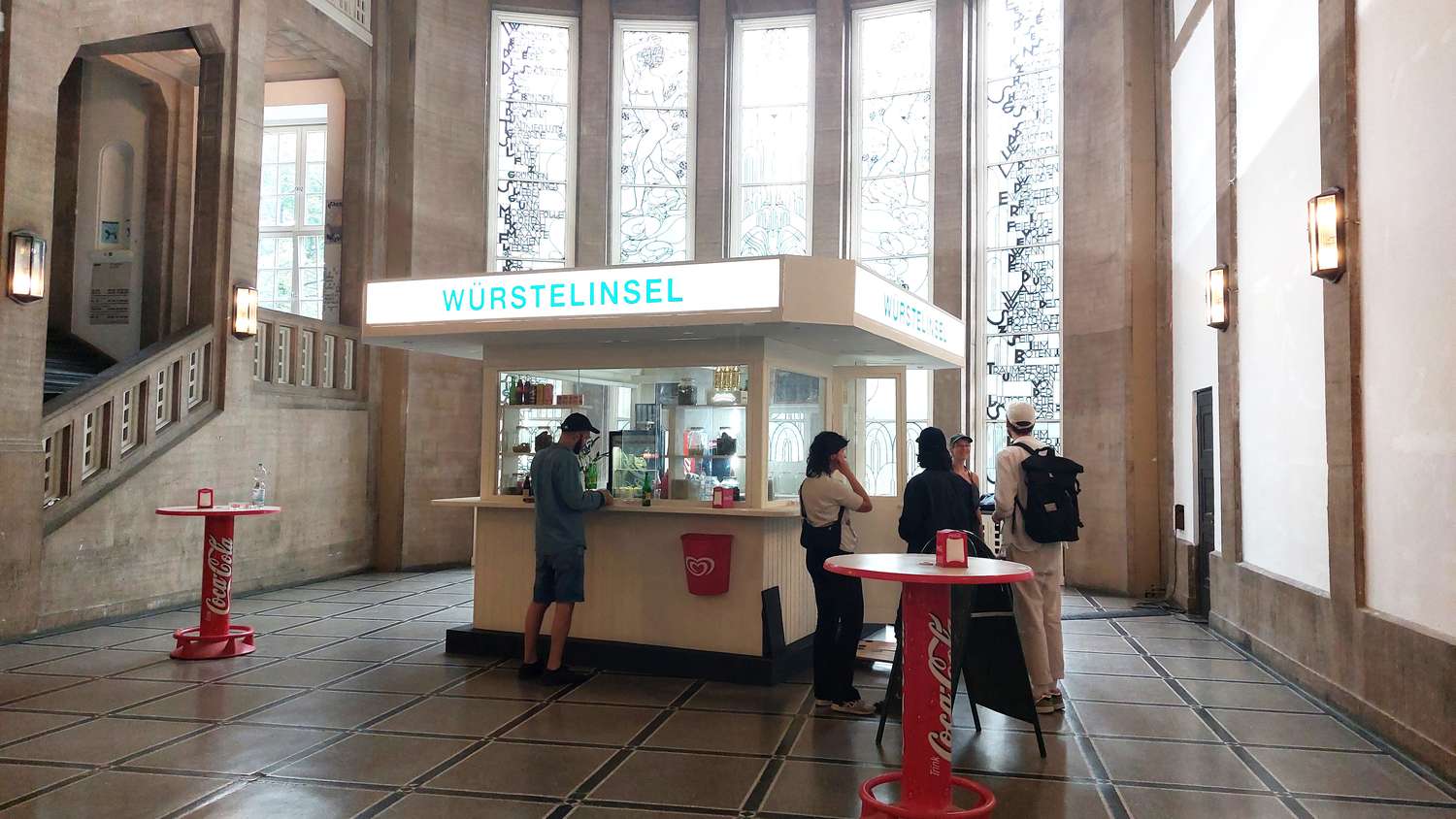


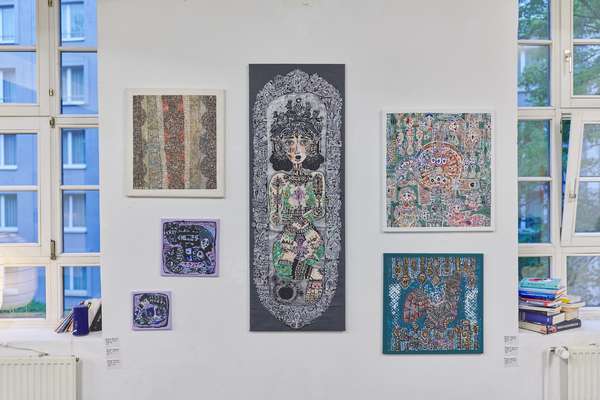




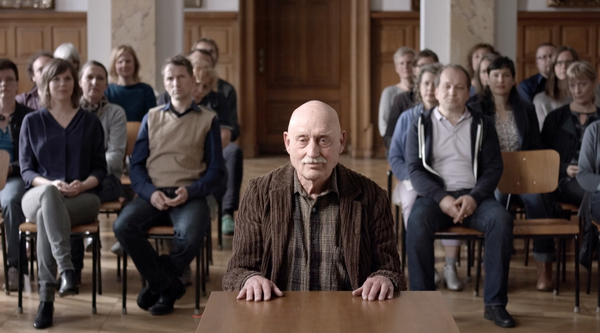


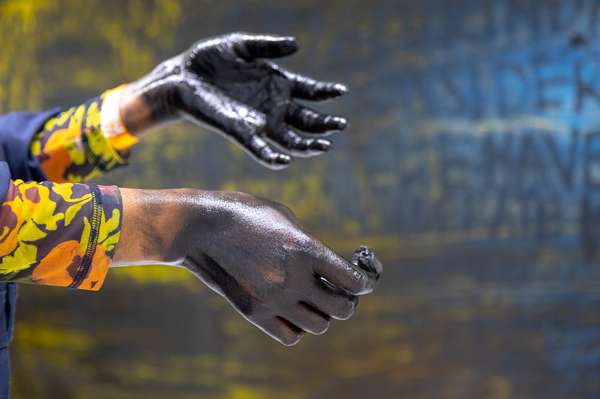




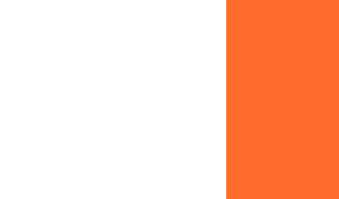
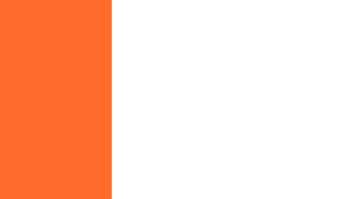


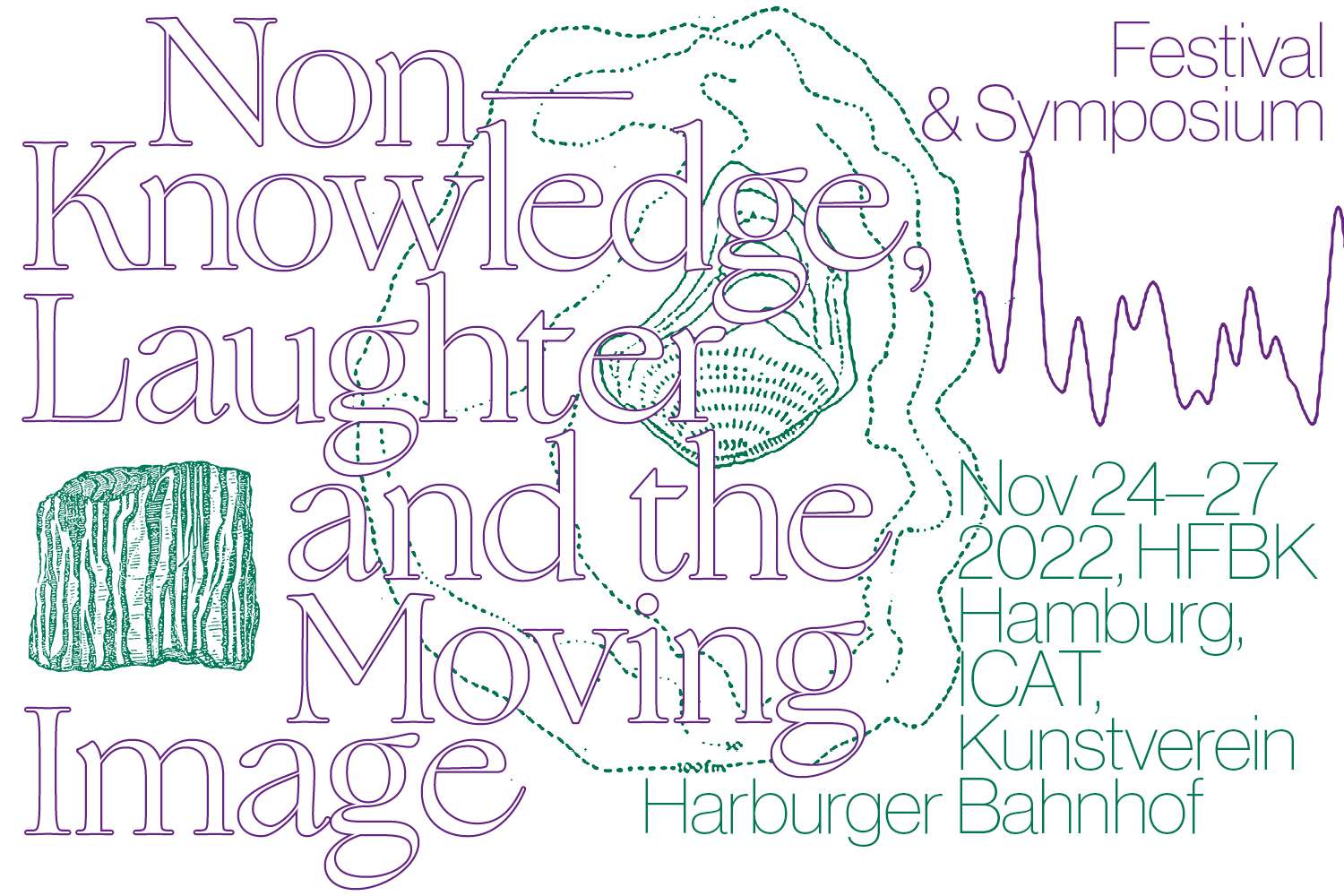






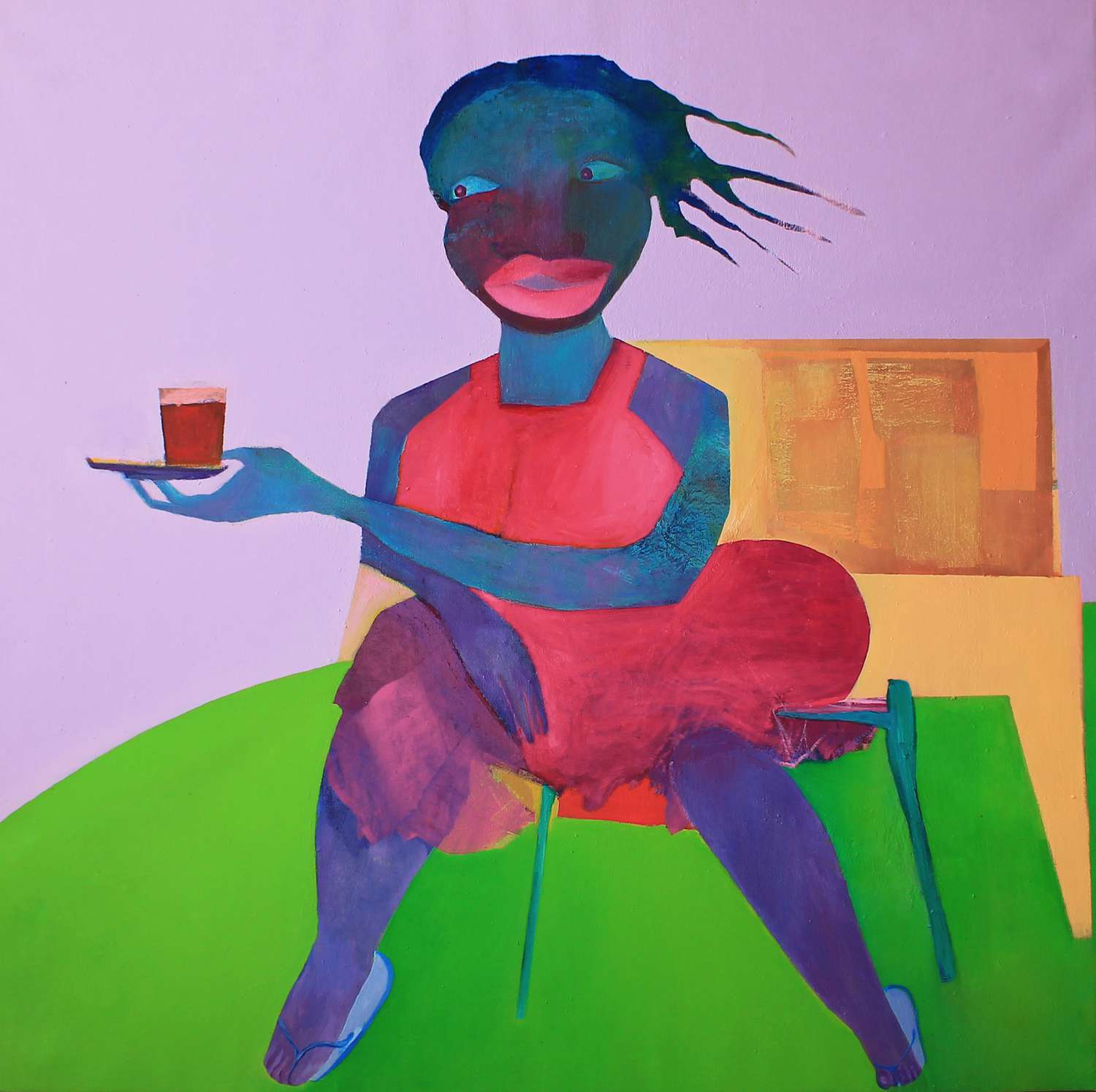
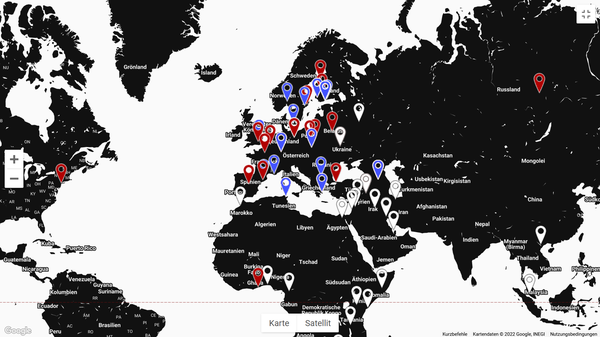
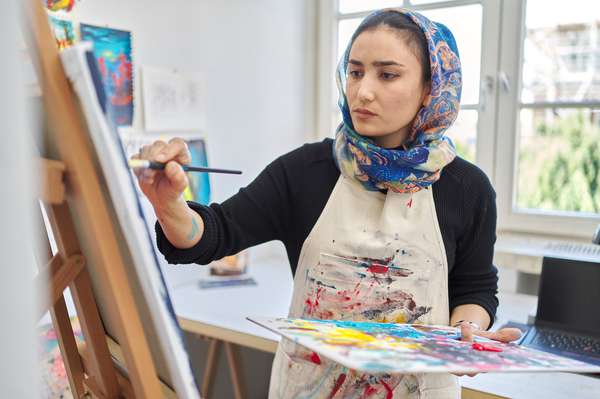









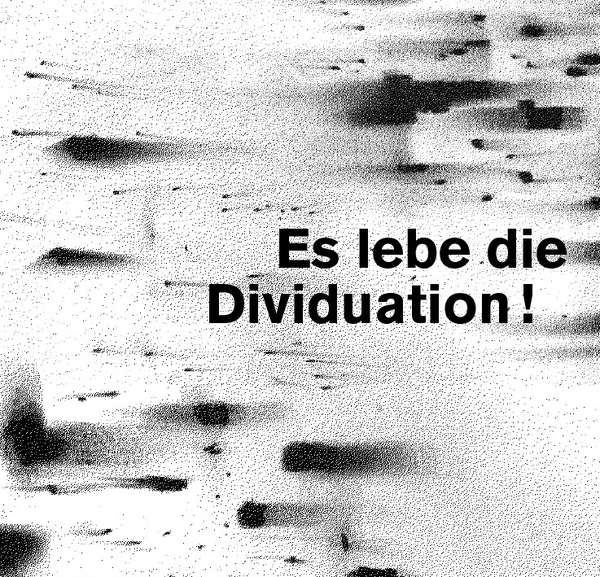





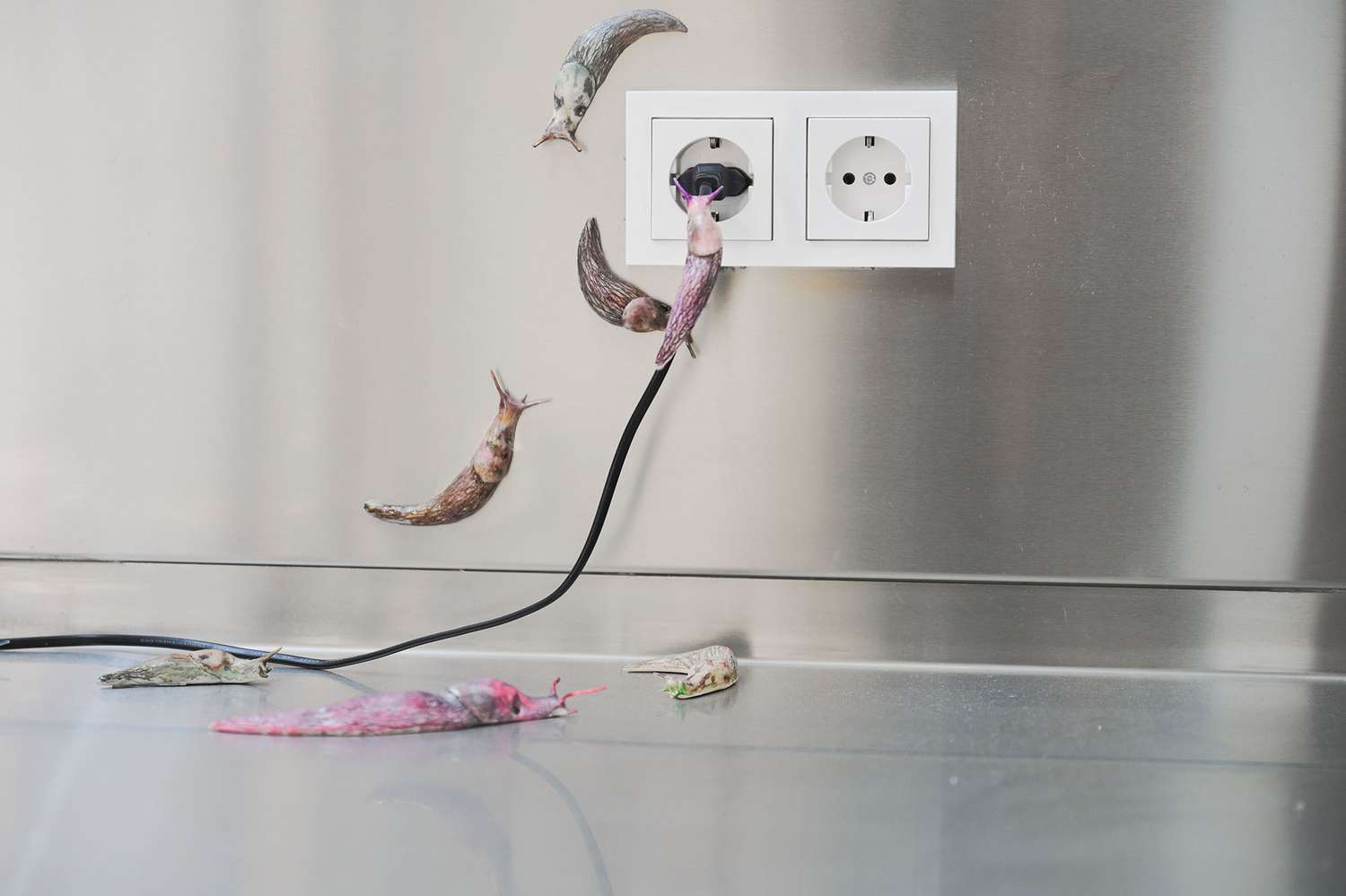


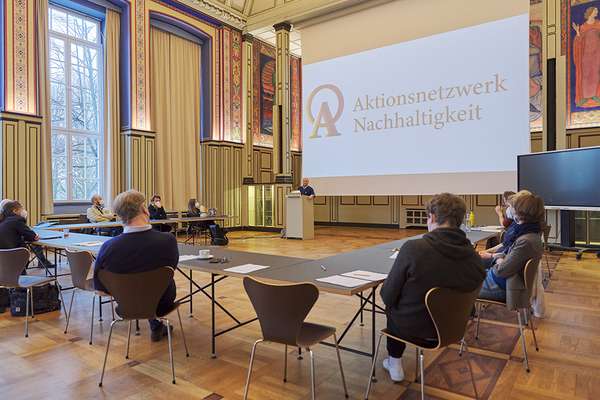






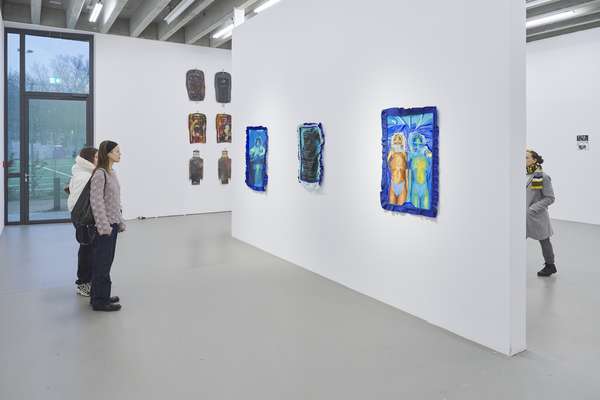








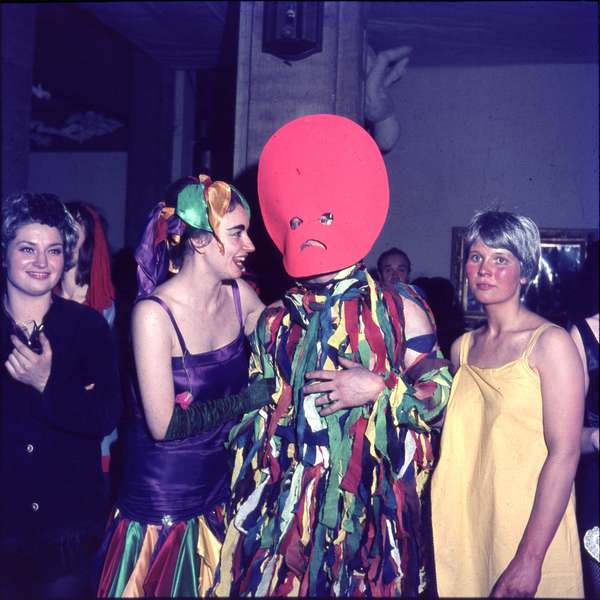

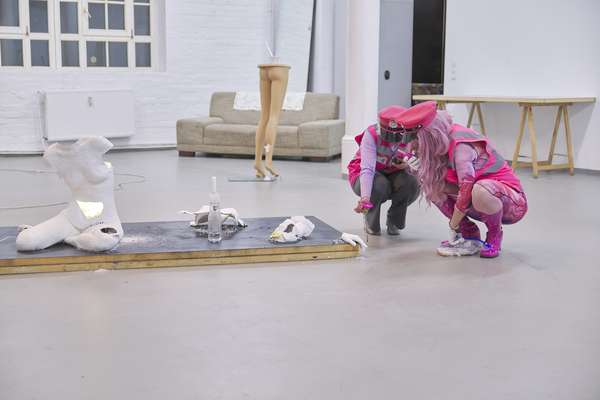



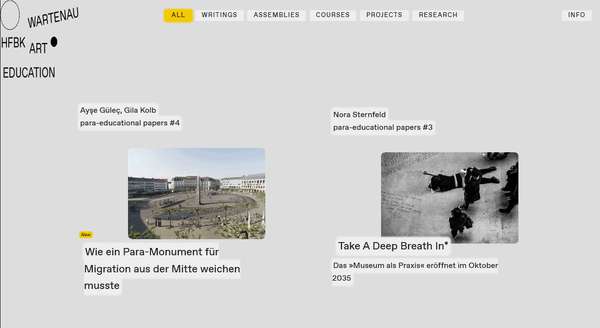

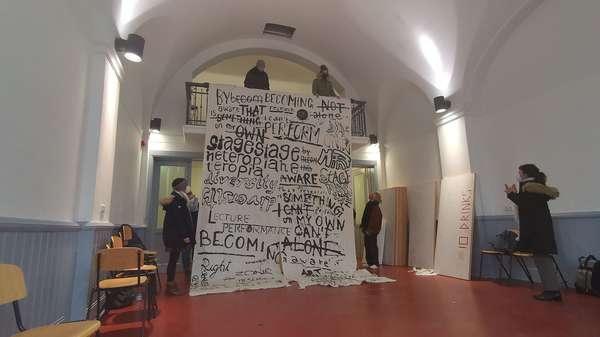
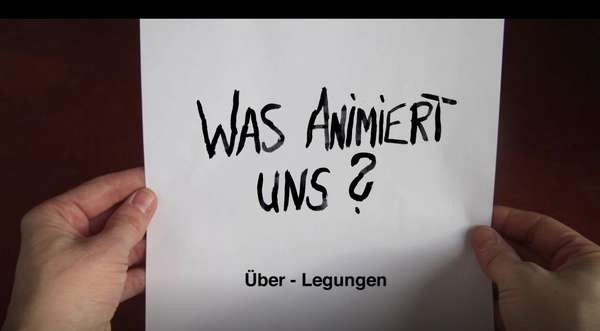
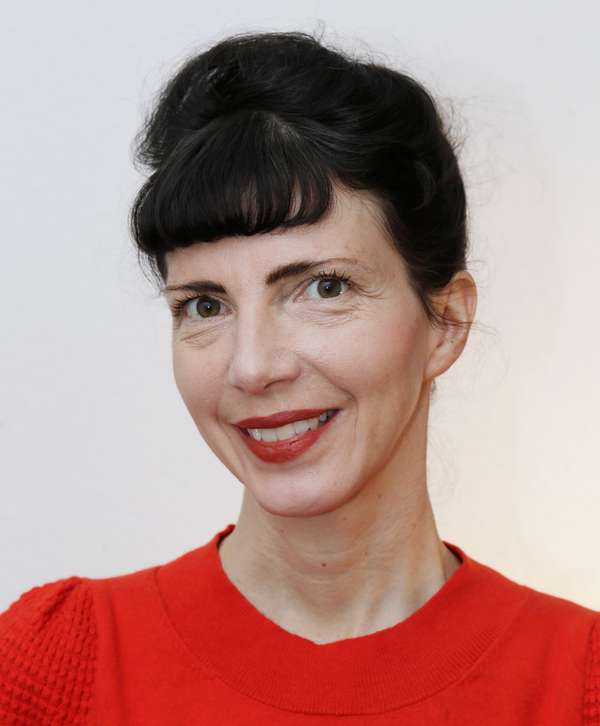
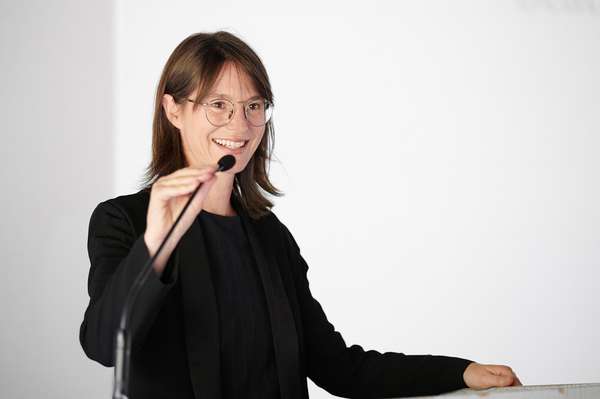

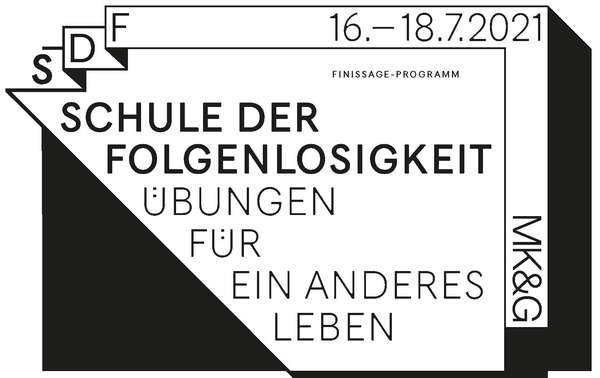


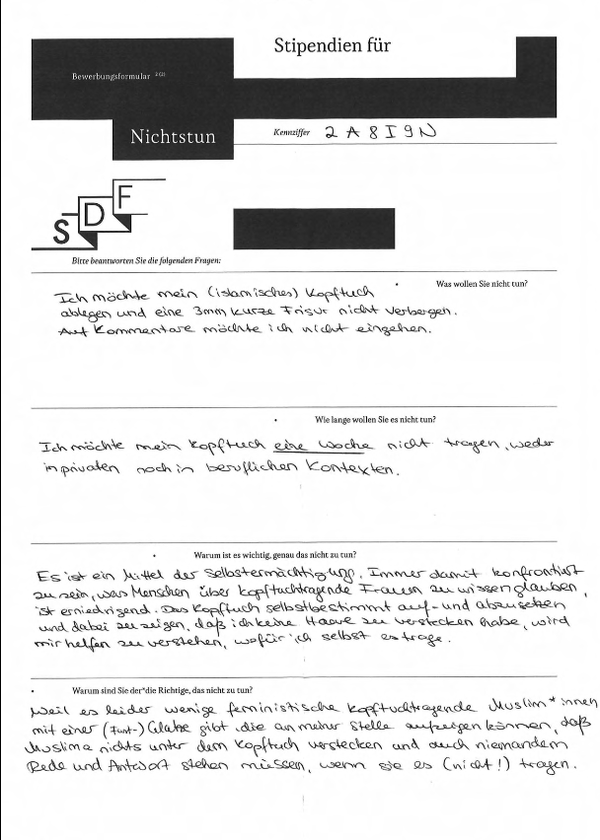









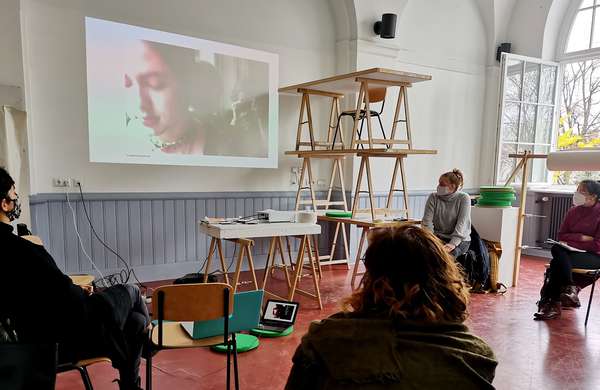





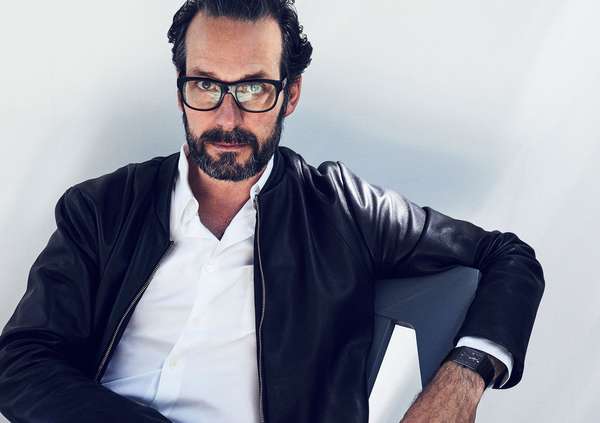

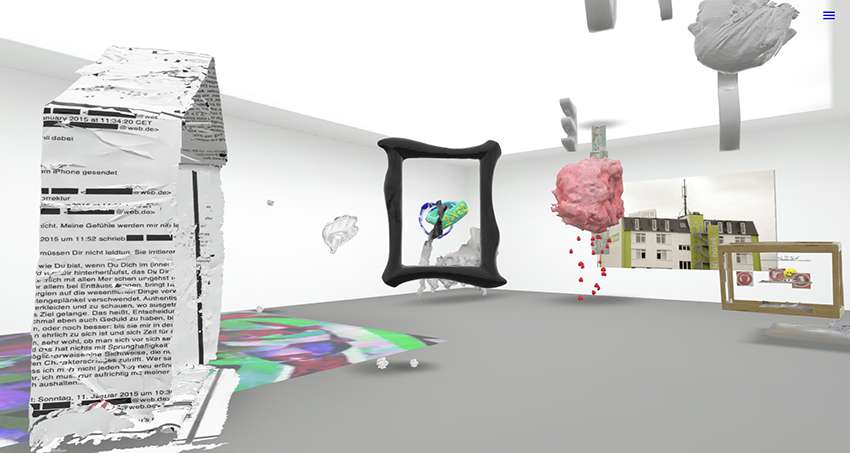

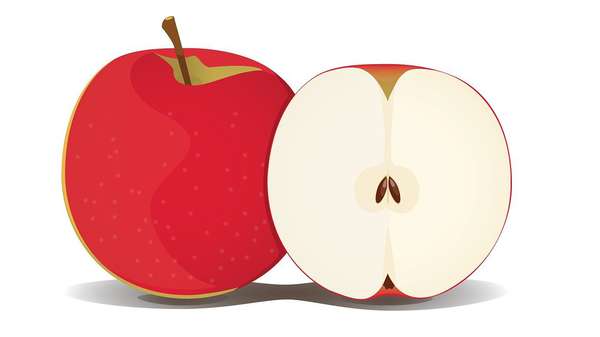

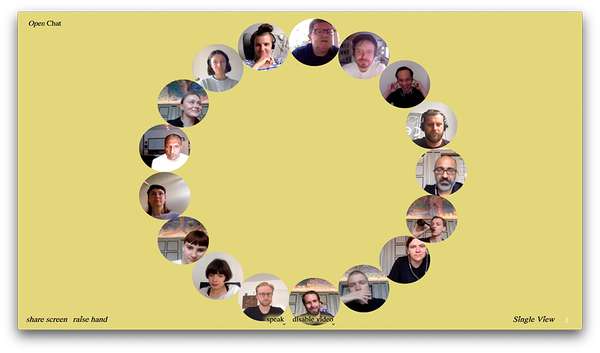

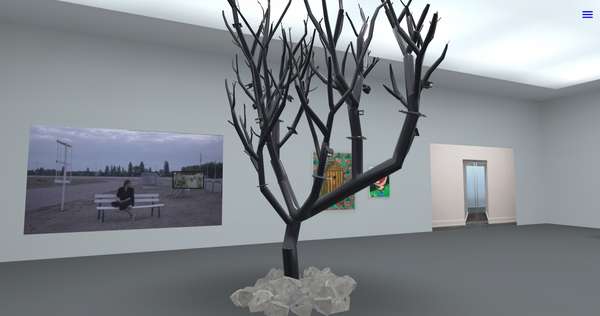









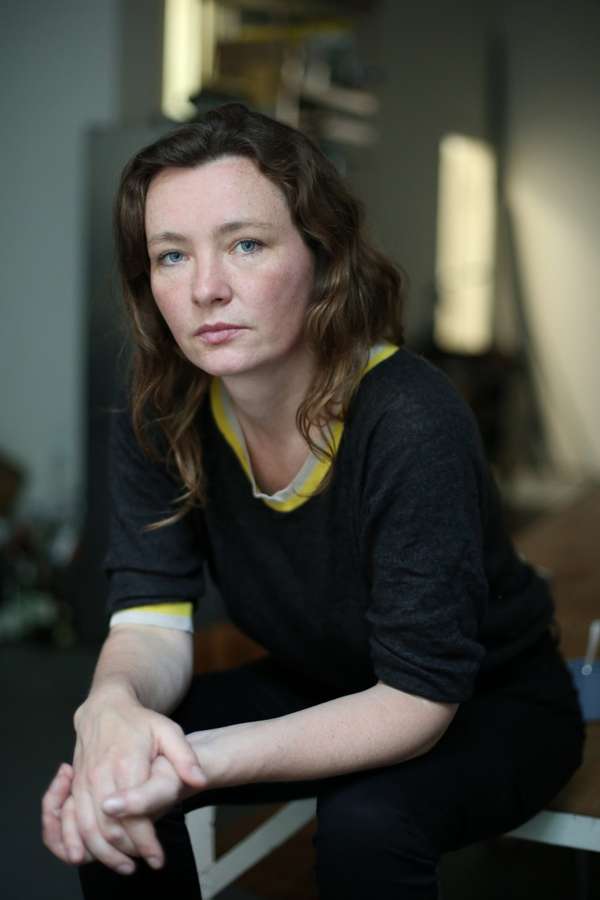

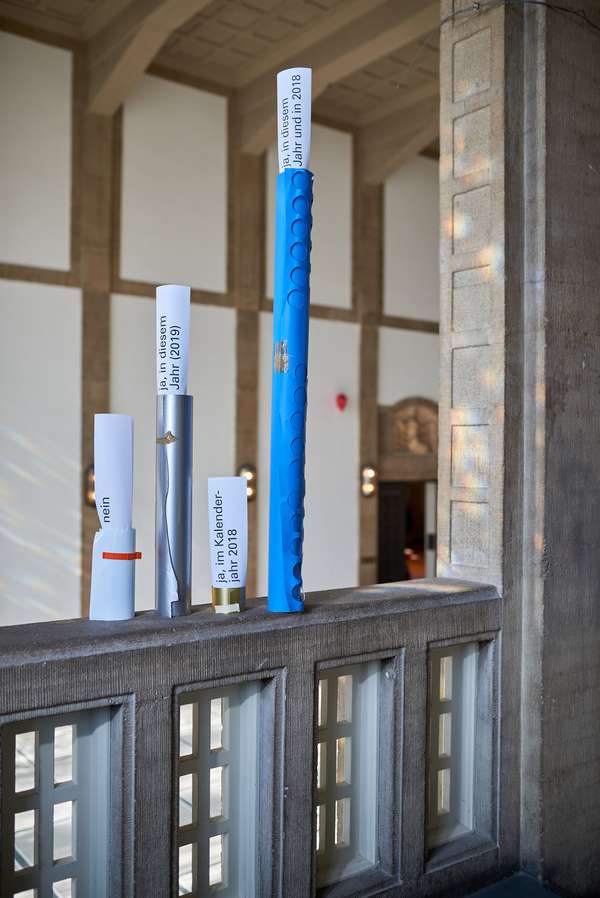



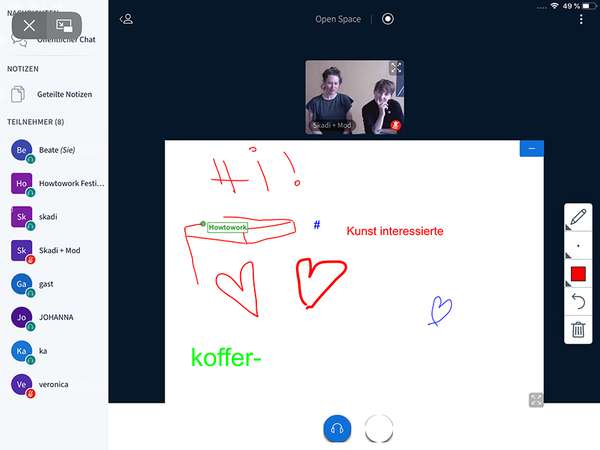
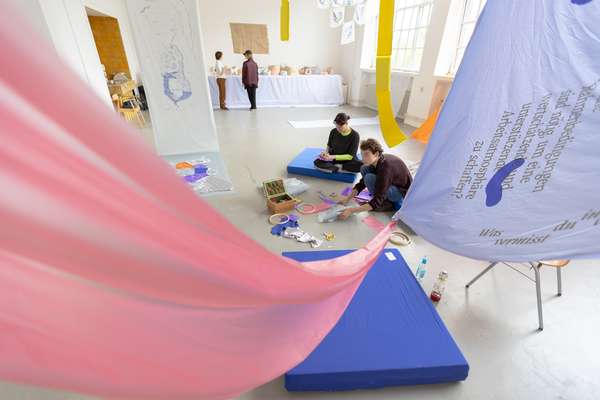

 Graduate Show 2025: Don't stop me now
Graduate Show 2025: Don't stop me now
 Long days, lots to do
Long days, lots to do
 Cine*Ami*es
Cine*Ami*es
 Redesign Democracy – competition for the ballot box of the democratic future
Redesign Democracy – competition for the ballot box of the democratic future
 Art in public space
Art in public space
 How to apply: study at HFBK Hamburg
How to apply: study at HFBK Hamburg
 Annual Exhibition 2025 at the HFBK Hamburg
Annual Exhibition 2025 at the HFBK Hamburg
 The Elephant in The Room – Sculpture today
The Elephant in The Room – Sculpture today
 Hiscox Art Prize 2024
Hiscox Art Prize 2024
 The New Woman
The New Woman
 Doing a PhD at the HFBK Hamburg
Doing a PhD at the HFBK Hamburg
 Graduate Show 2024 - Letting Go
Graduate Show 2024 - Letting Go
 Finkenwerder Art Prize 2024
Finkenwerder Art Prize 2024
 Archives of the Body - The Body in Archiving
Archives of the Body - The Body in Archiving
 New partnership with the School of Arts at the University of Haifa
New partnership with the School of Arts at the University of Haifa
 Annual Exhibition 2024 at the HFBK Hamburg
Annual Exhibition 2024 at the HFBK Hamburg
 (Ex)Changes of / in Art
(Ex)Changes of / in Art
 Extended Libraries
Extended Libraries
 And Still I Rise
And Still I Rise
 Let's talk about language
Let's talk about language
 Graduate Show 2023: Unfinished Business
Graduate Show 2023: Unfinished Business
 Let`s work together
Let`s work together
 Annual Exhibition 2023 at HFBK Hamburg
Annual Exhibition 2023 at HFBK Hamburg
 Symposium: Controversy over documenta fifteen
Symposium: Controversy over documenta fifteen
 Festival and Symposium: Non-Knowledge, Laughter and the Moving Image
Festival and Symposium: Non-Knowledge, Laughter and the Moving Image
 Solo exhibition by Konstantin Grcic
Solo exhibition by Konstantin Grcic
 Art and war
Art and war
 Graduate Show 2022: We’ve Only Just Begun
Graduate Show 2022: We’ve Only Just Begun
 June is full of art and theory
June is full of art and theory
 Finkenwerder Art Prize 2022
Finkenwerder Art Prize 2022
 Nachhaltigkeit im Kontext von Kunst und Kunsthochschule
Nachhaltigkeit im Kontext von Kunst und Kunsthochschule
 Raum für die Kunst
Raum für die Kunst
 Annual Exhibition 2022 at the HFBK
Annual Exhibition 2022 at the HFBK
 Conference: Counter-Monuments and Para-Monuments.
Conference: Counter-Monuments and Para-Monuments.
 Diversity
Diversity
 Live und in Farbe: die ASA Open Studios im Juni 2021
Live und in Farbe: die ASA Open Studios im Juni 2021
 Unlearning: Wartenau Assemblies
Unlearning: Wartenau Assemblies
 School of No Consequences
School of No Consequences
 Annual Exhibition 2021 at the HFBK
Annual Exhibition 2021 at the HFBK
 Semestereröffnung und Hiscox-Preisverleihung 2020
Semestereröffnung und Hiscox-Preisverleihung 2020
 Teaching Art Online at the HFBK
Teaching Art Online at the HFBK
 HFBK Graduate Survey
HFBK Graduate Survey
 How political is Social Design?
How political is Social Design?